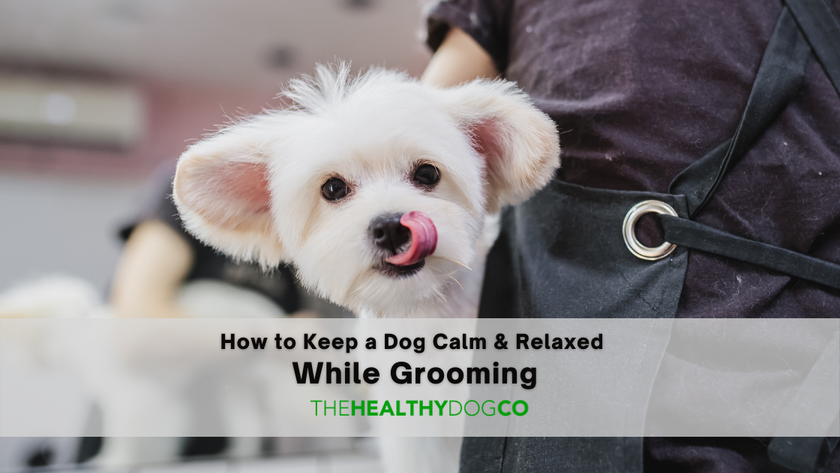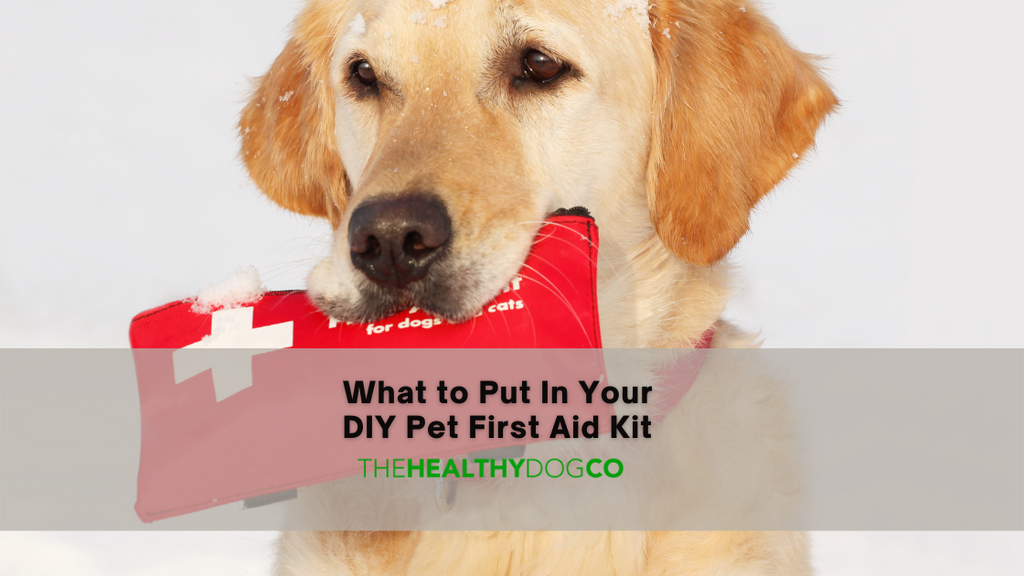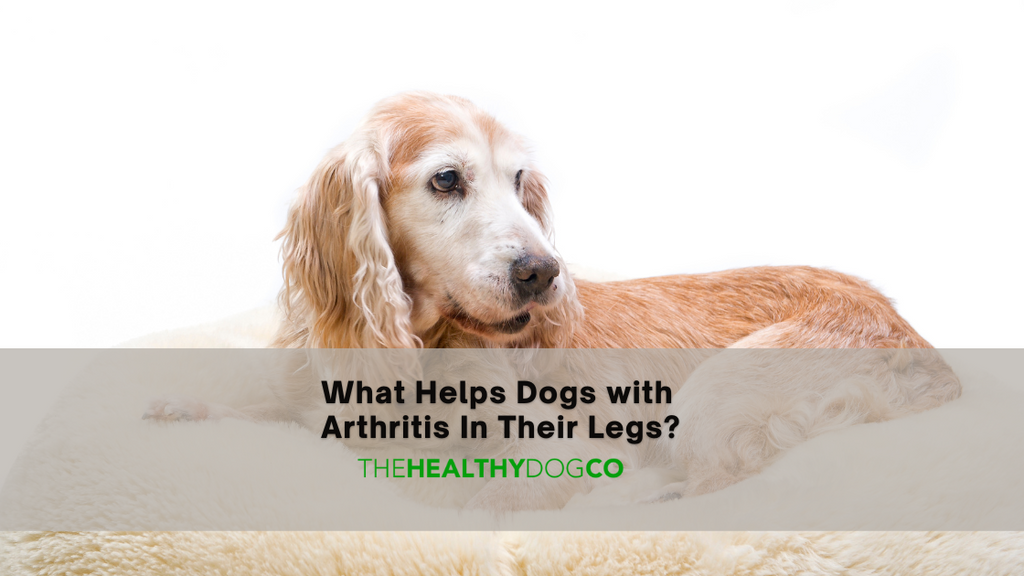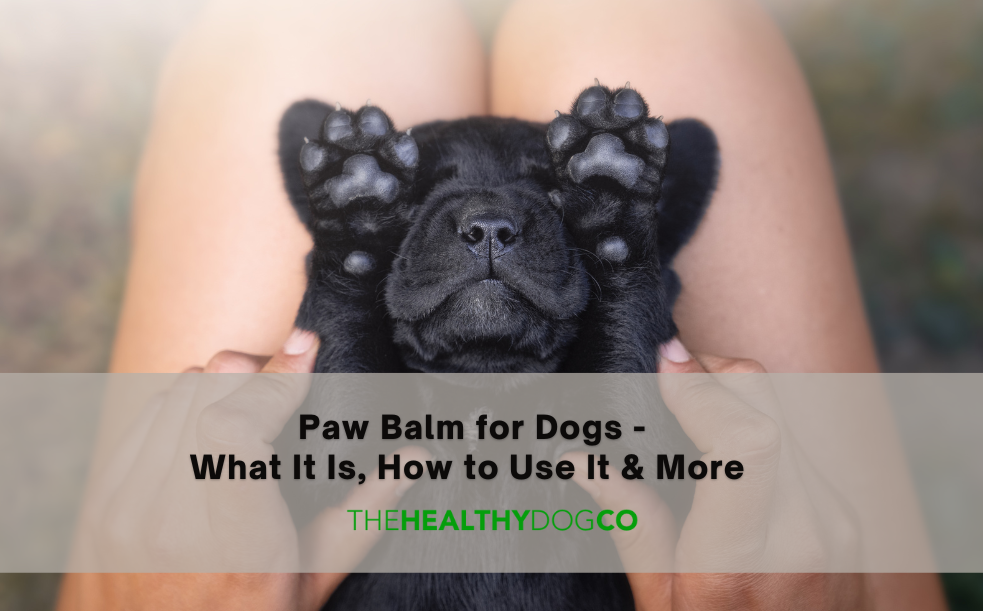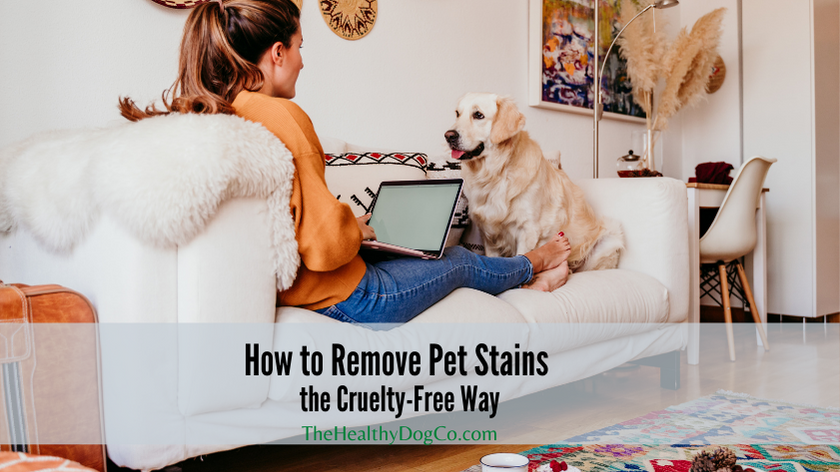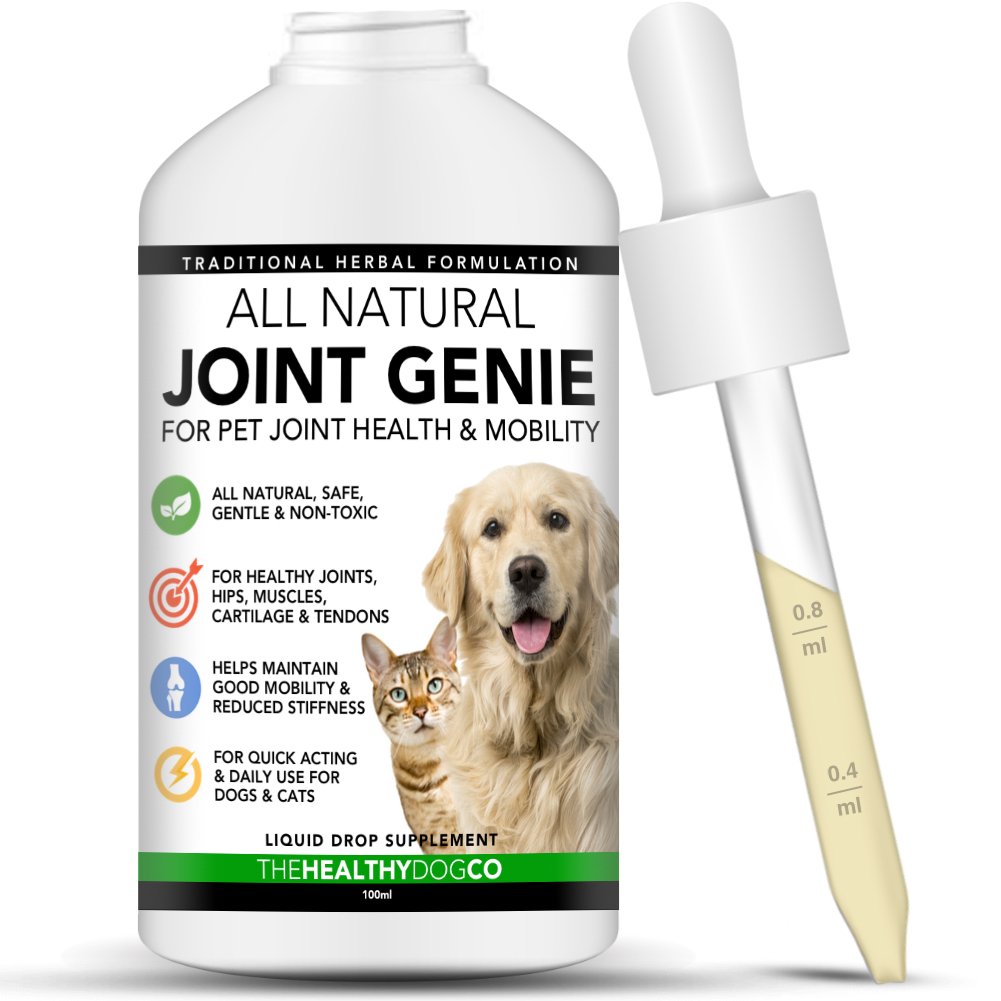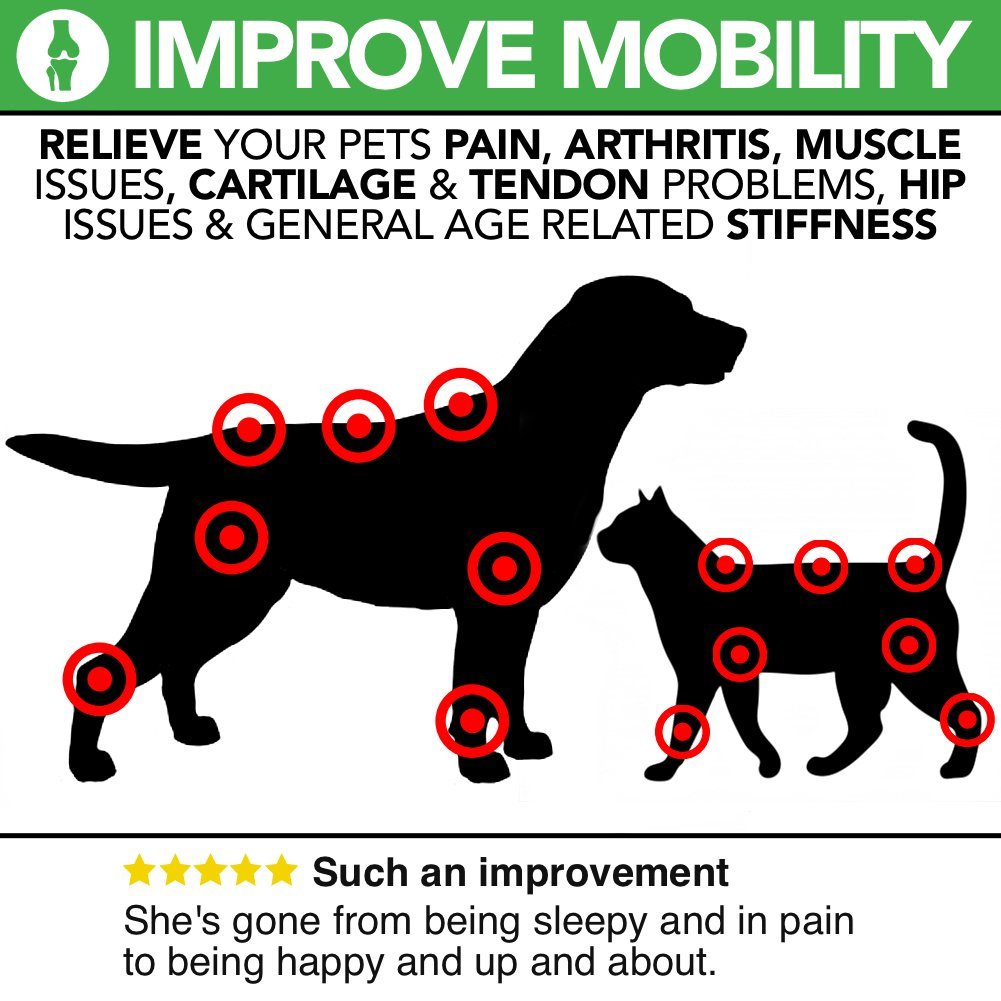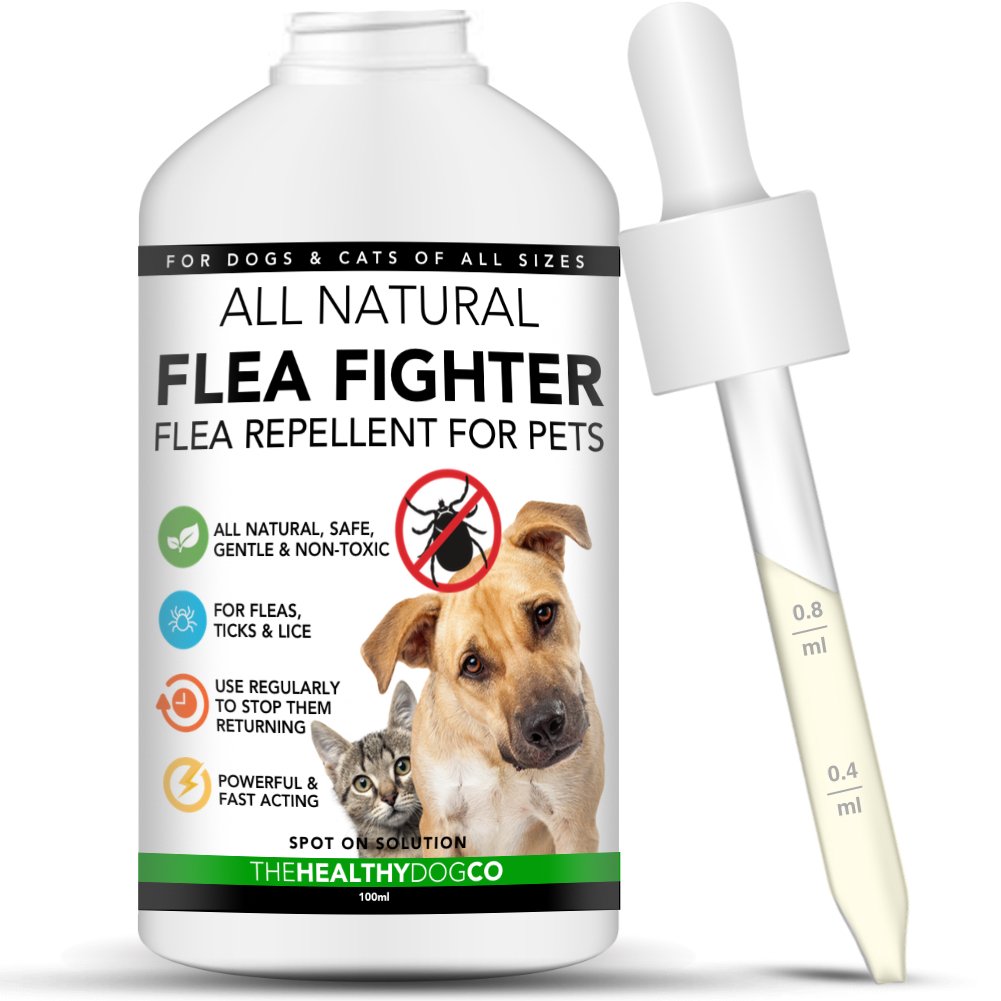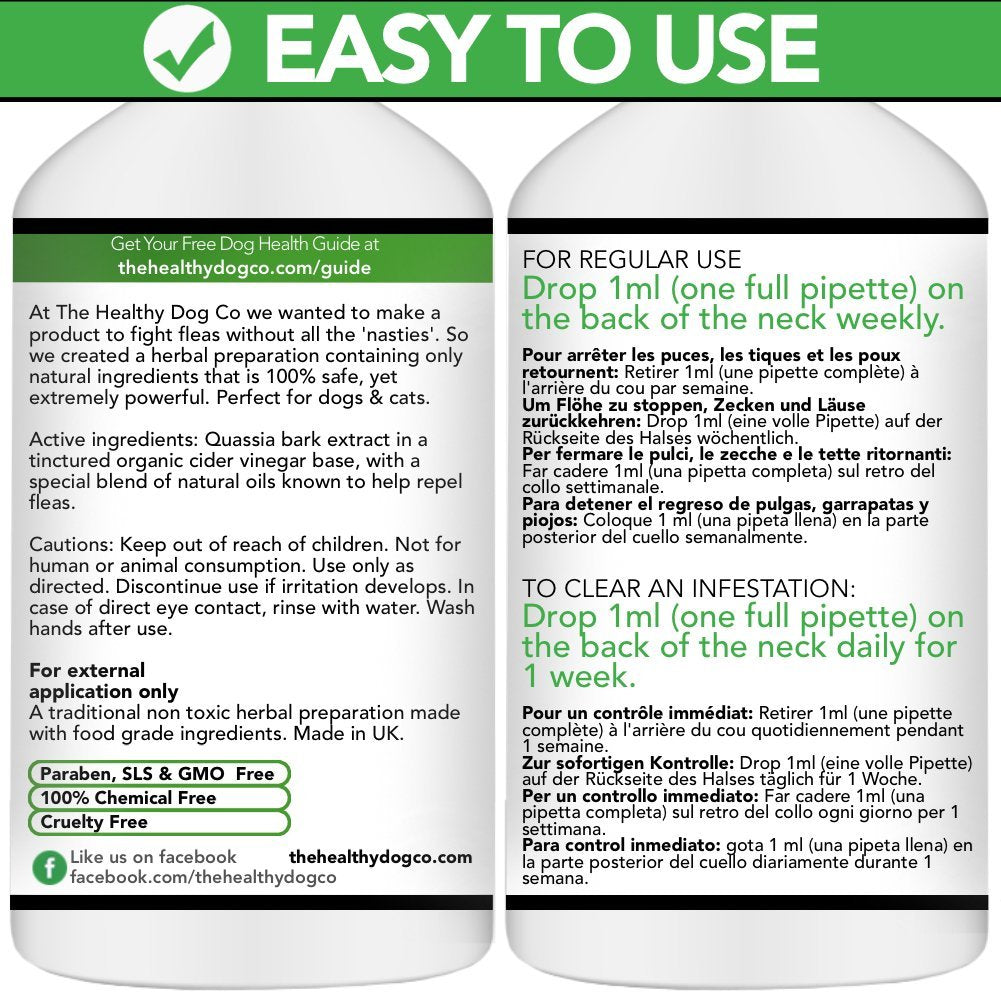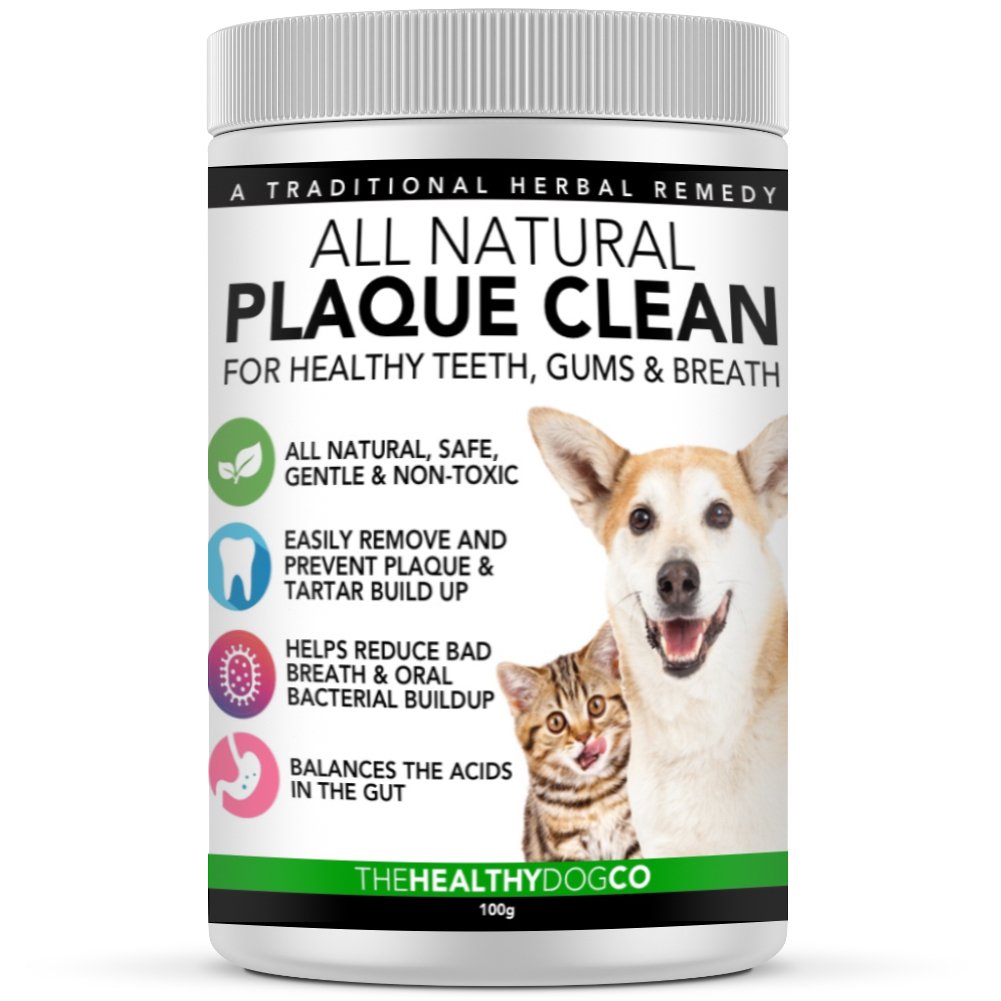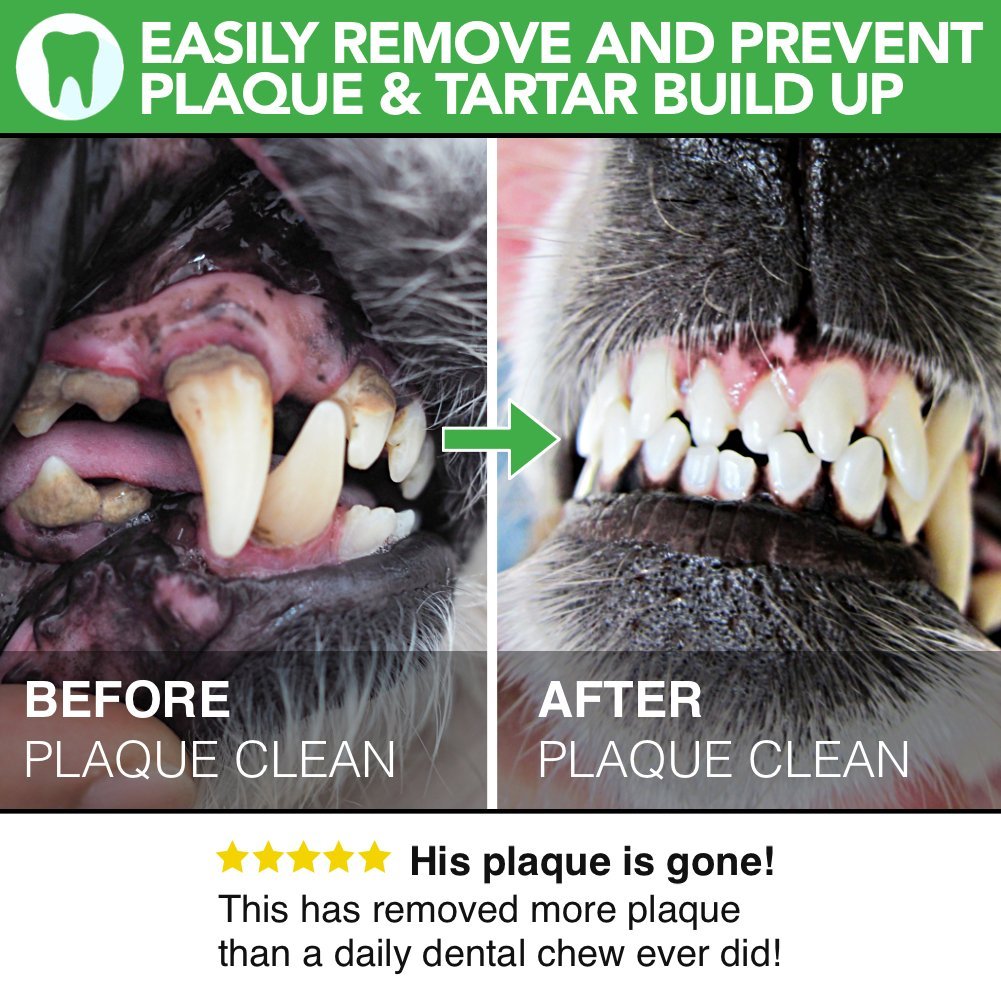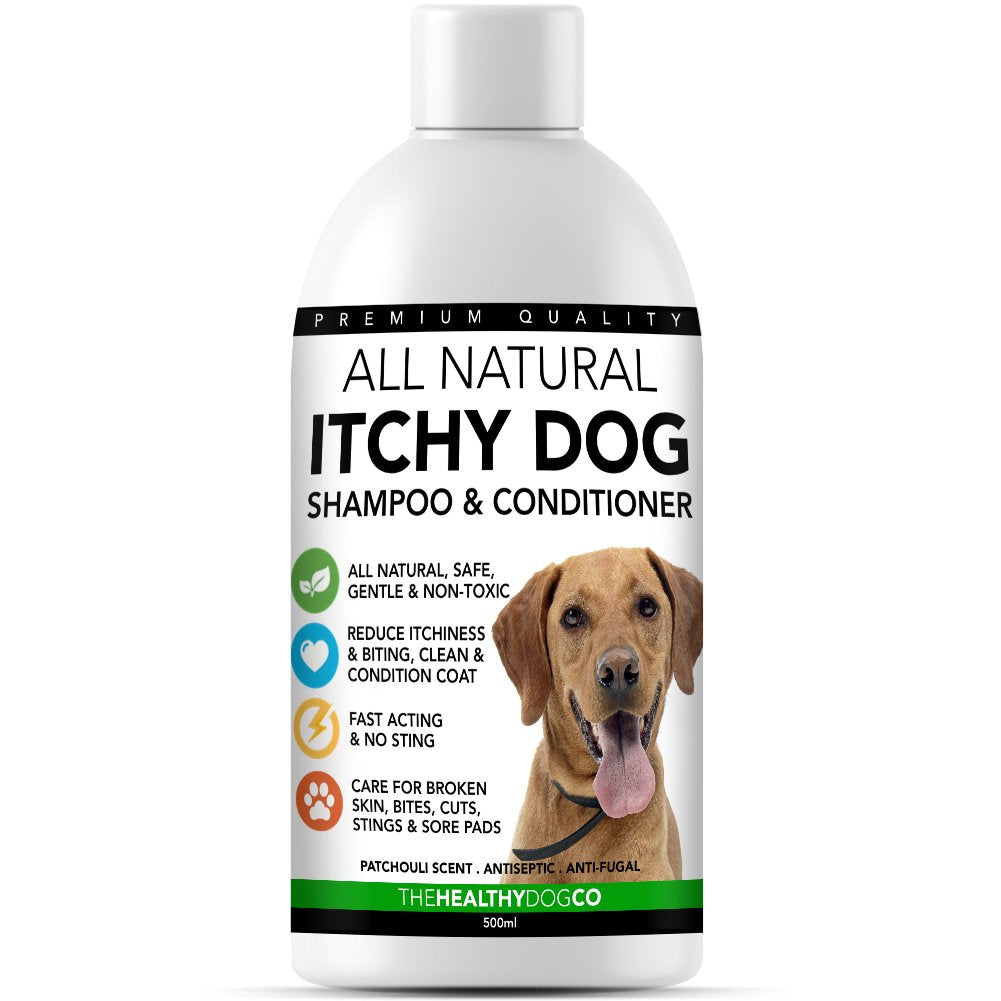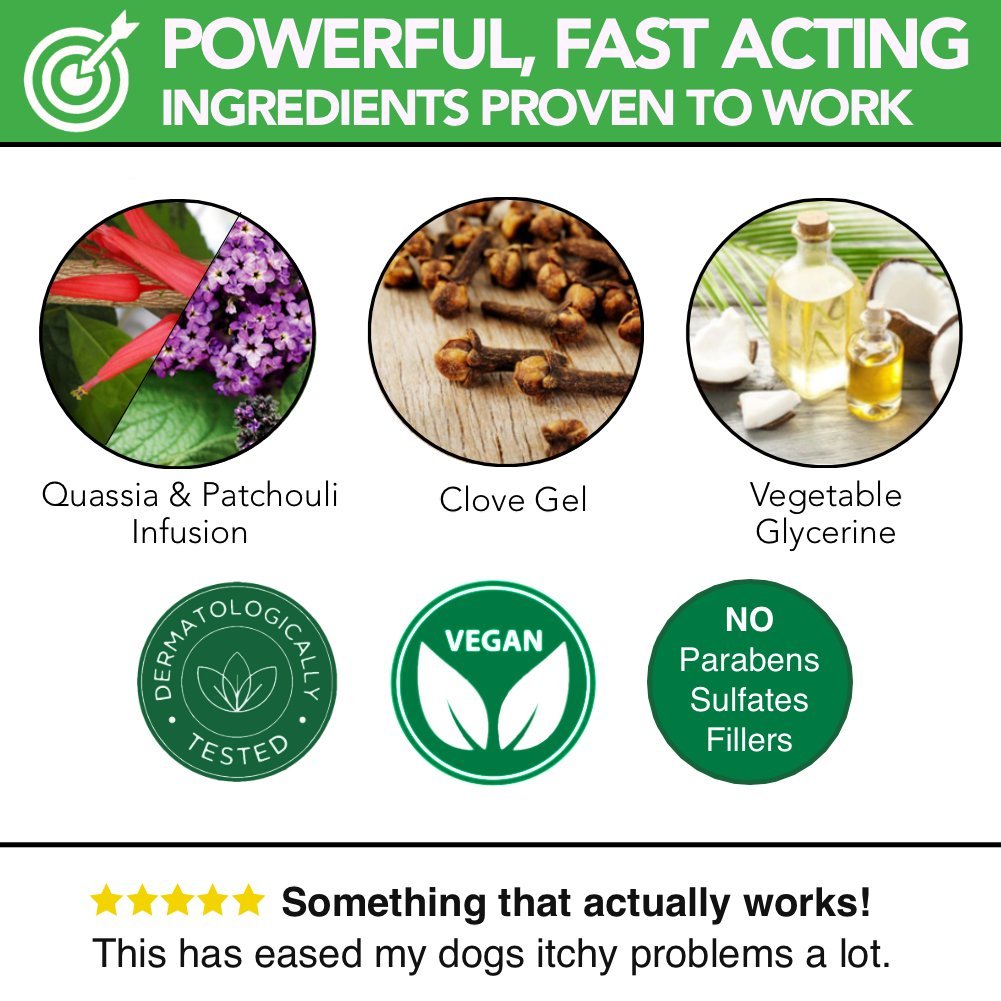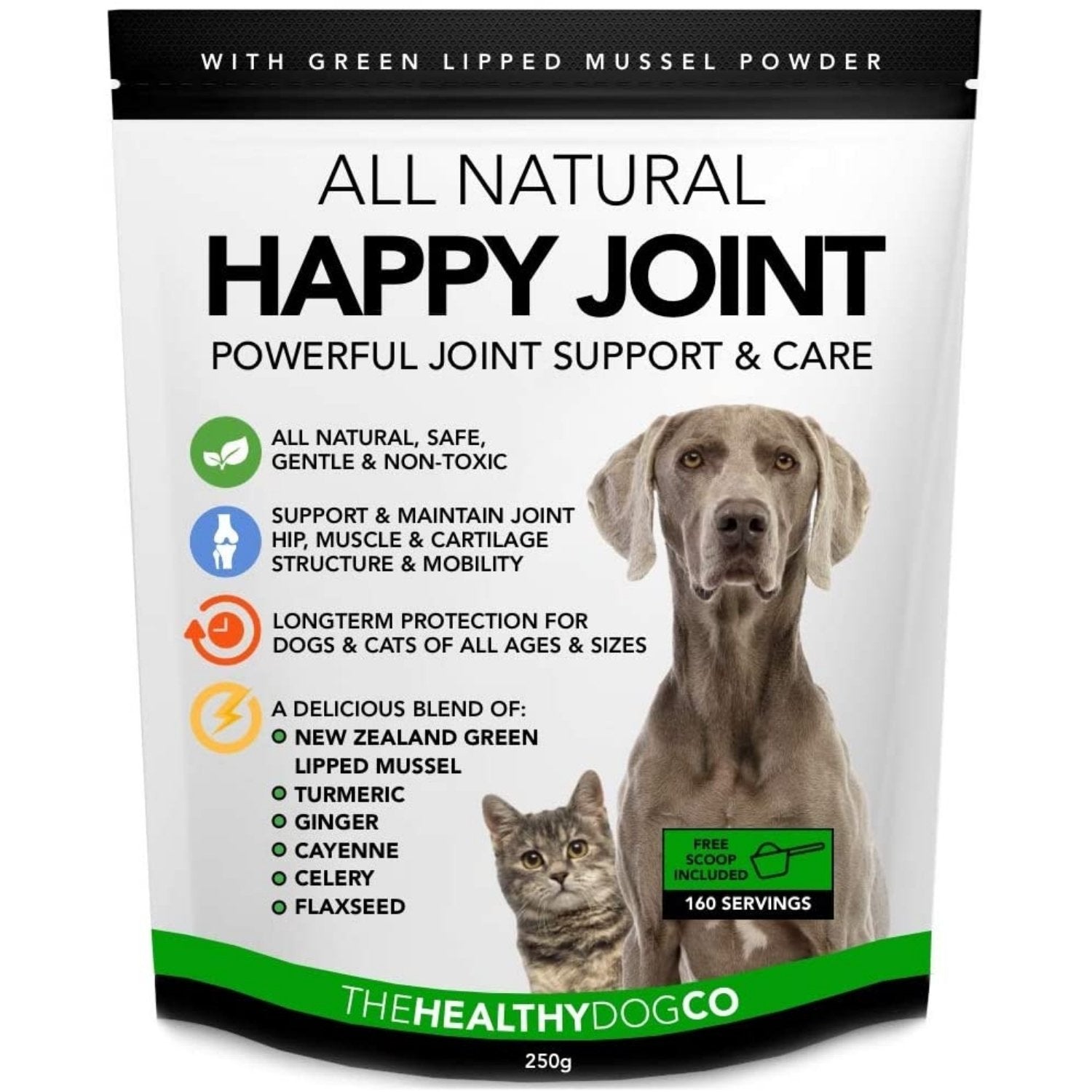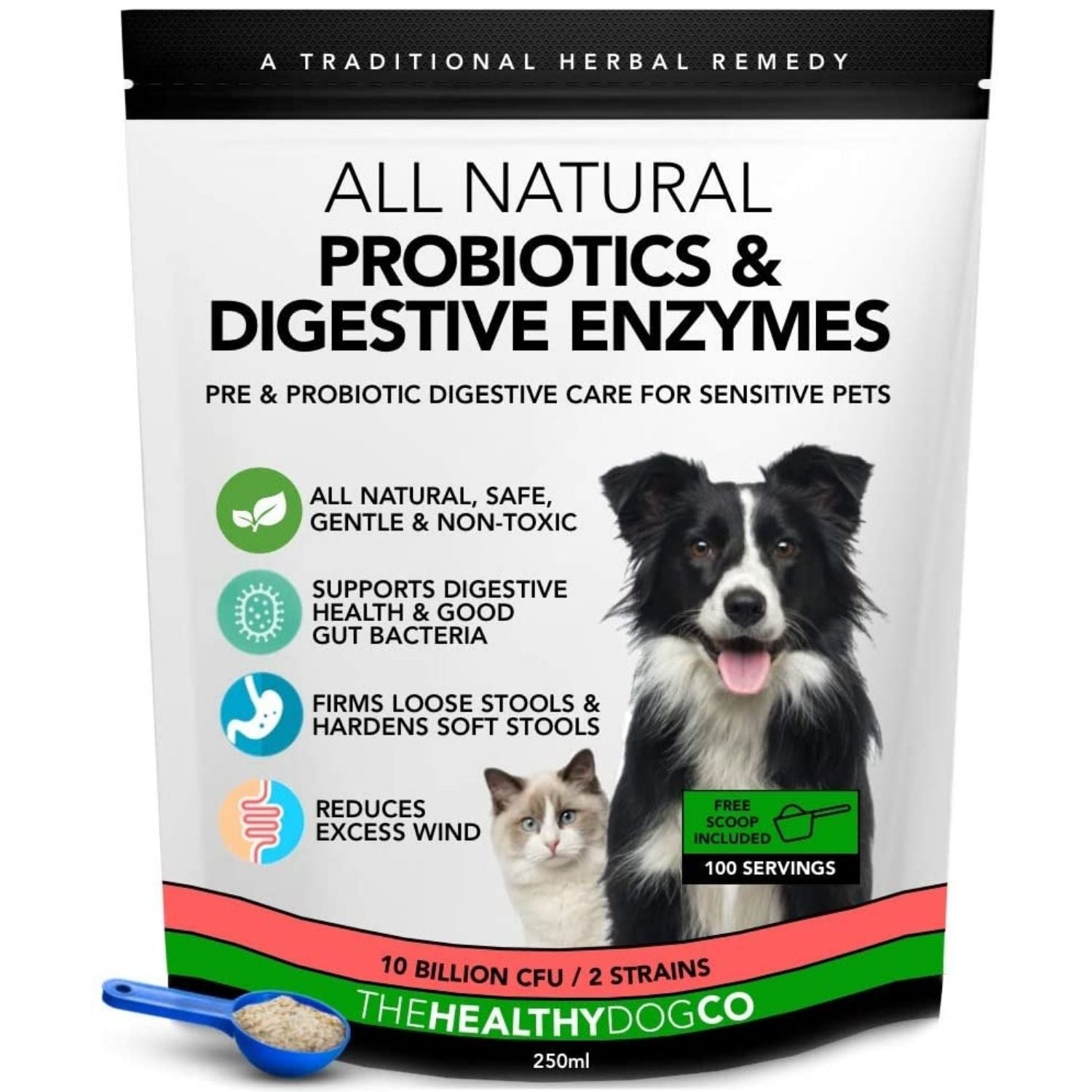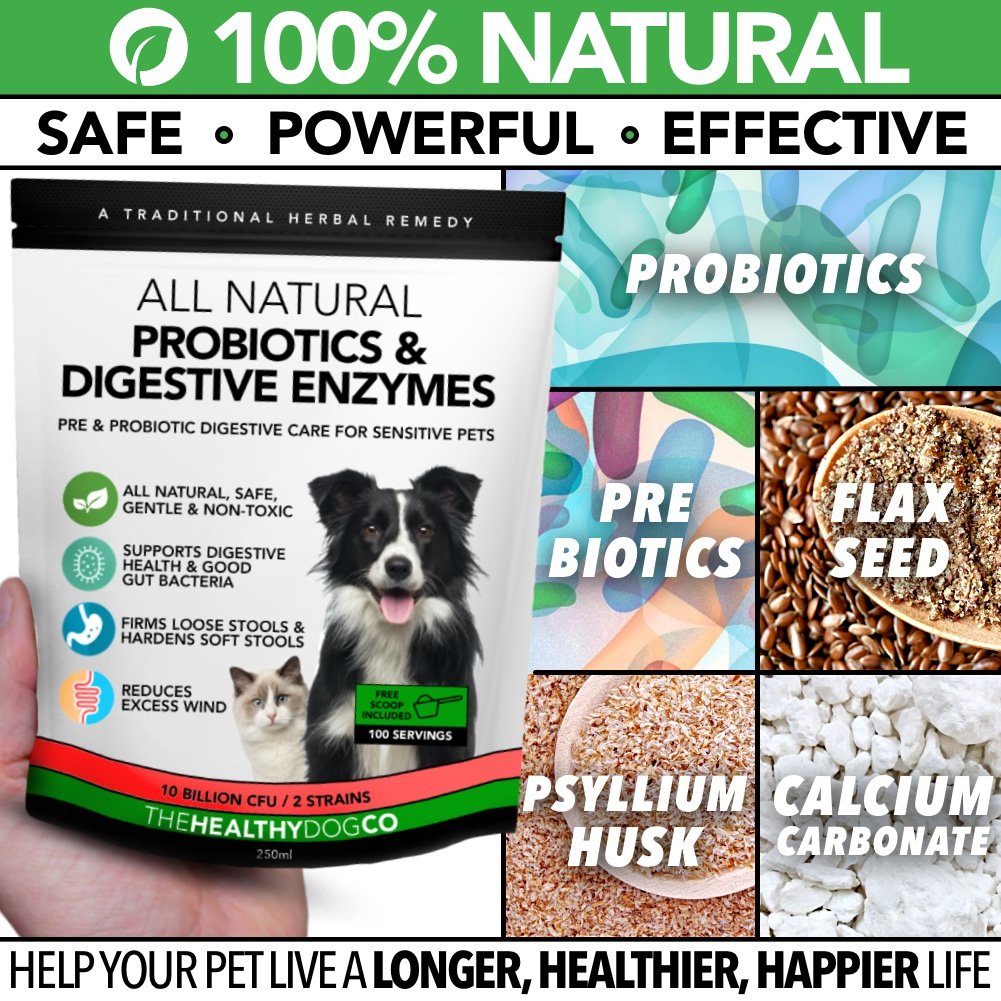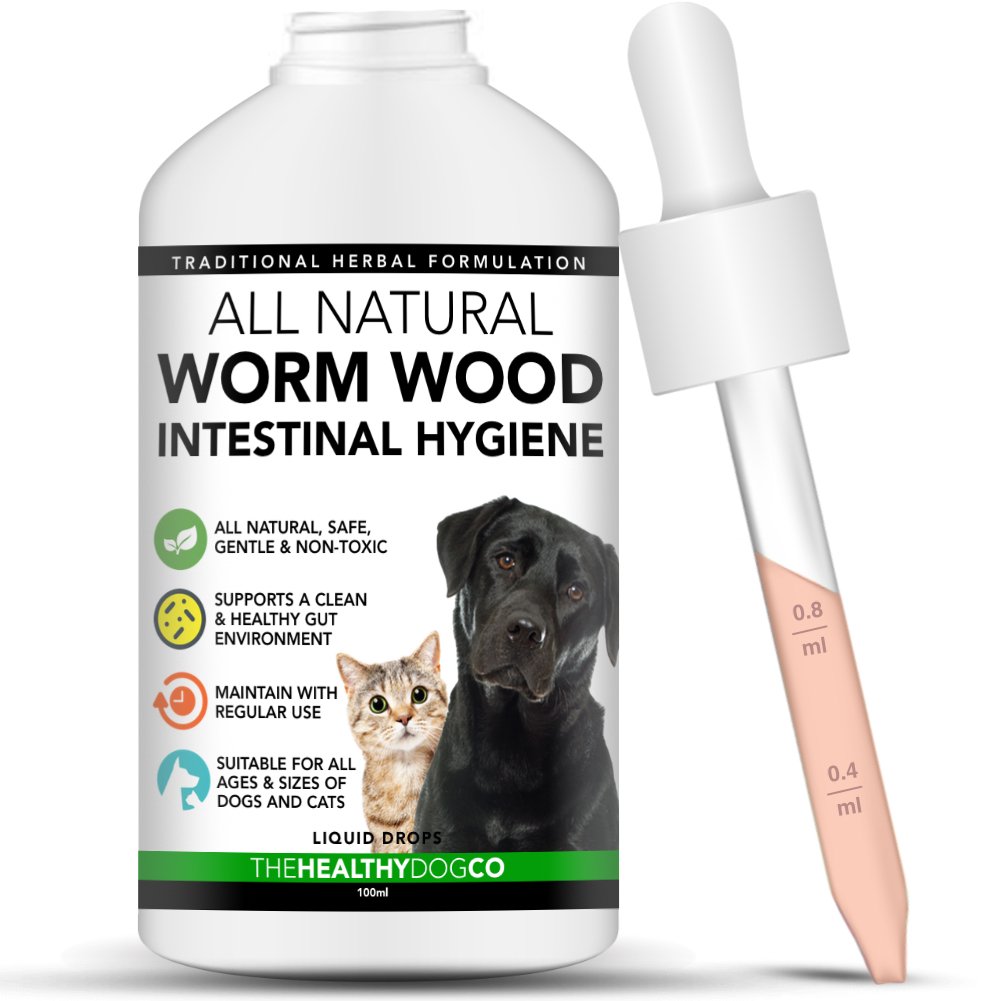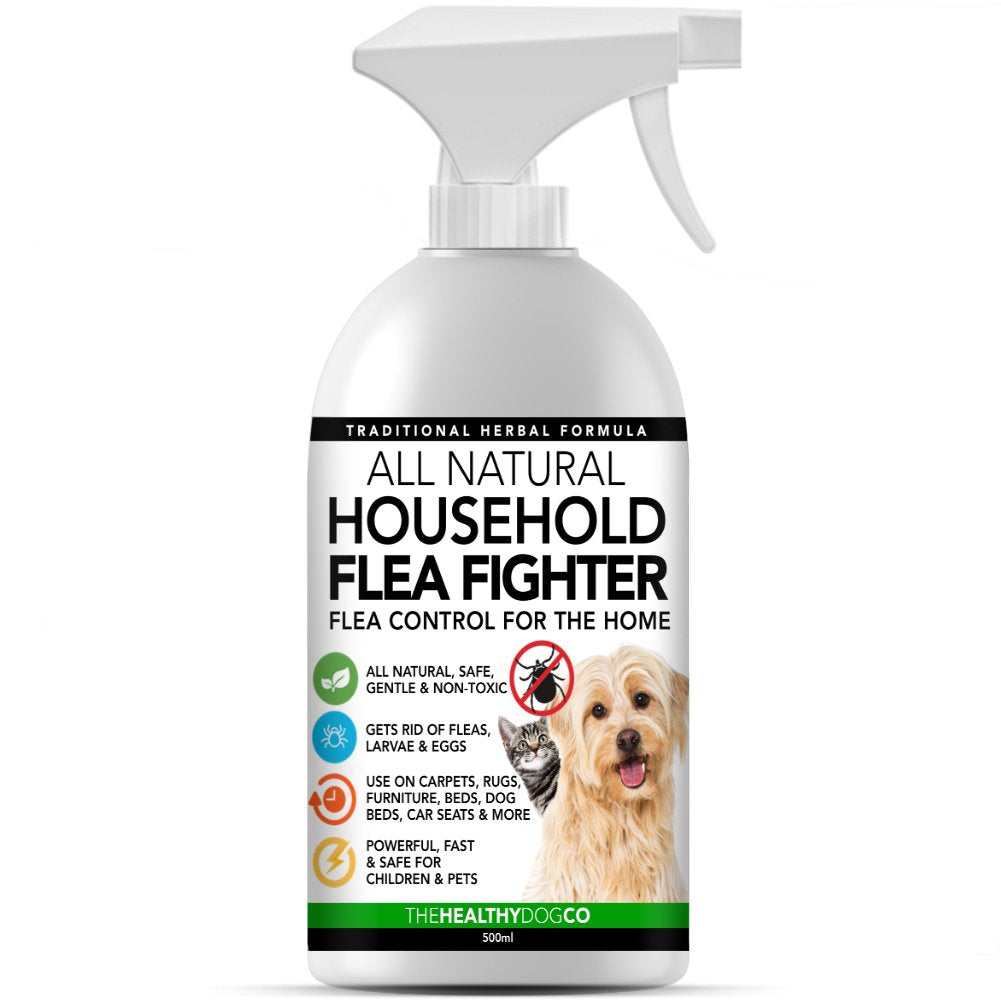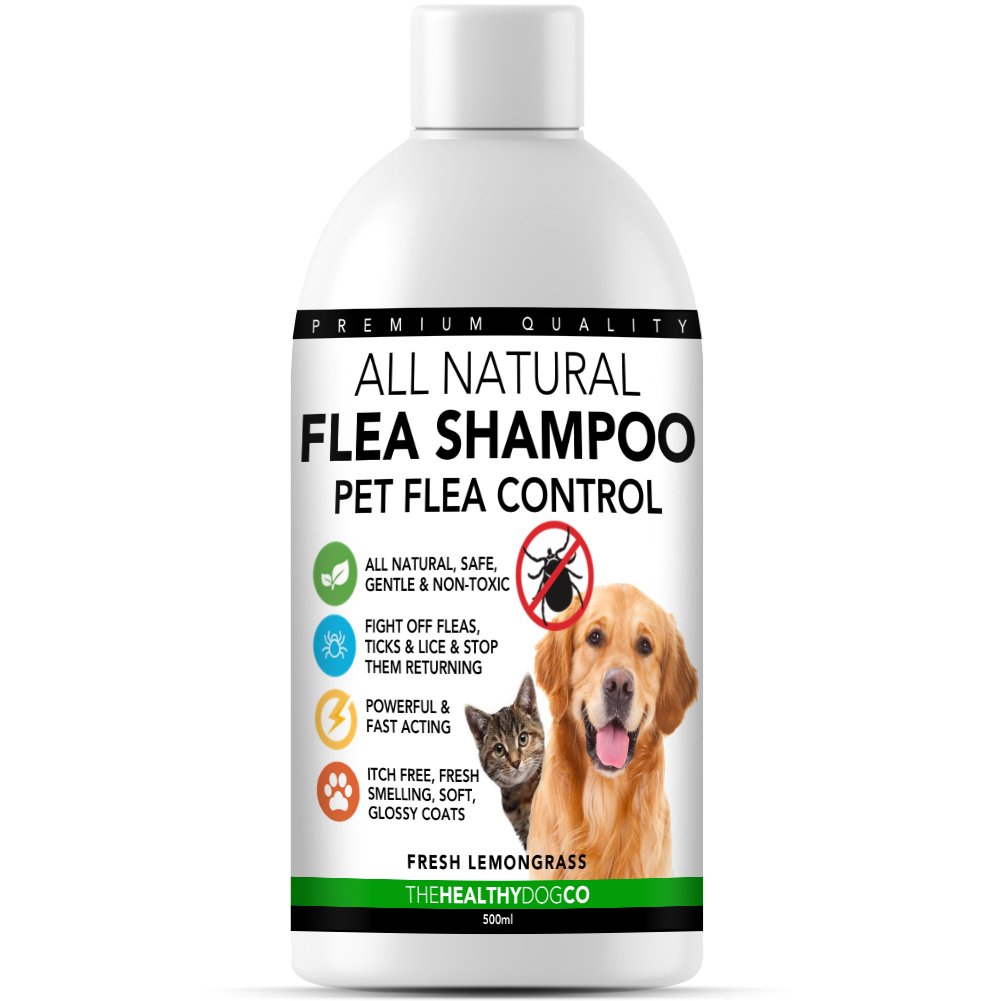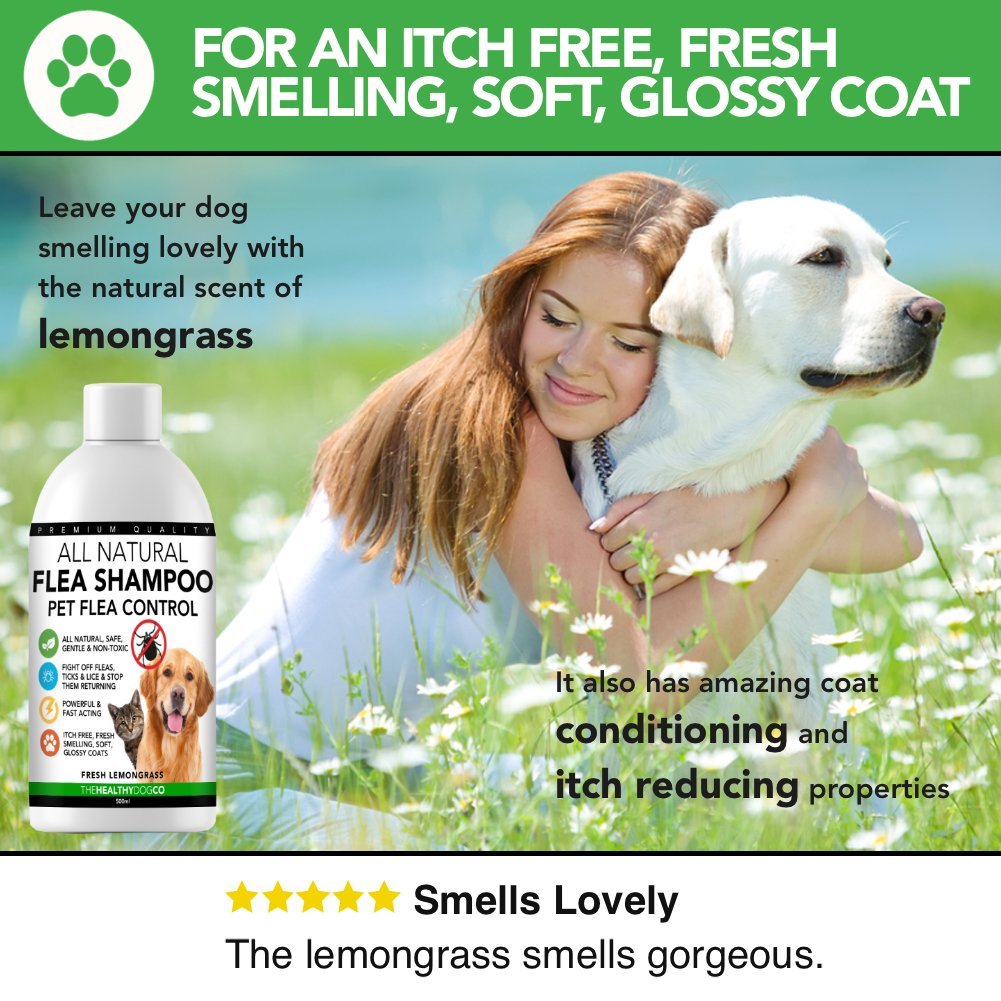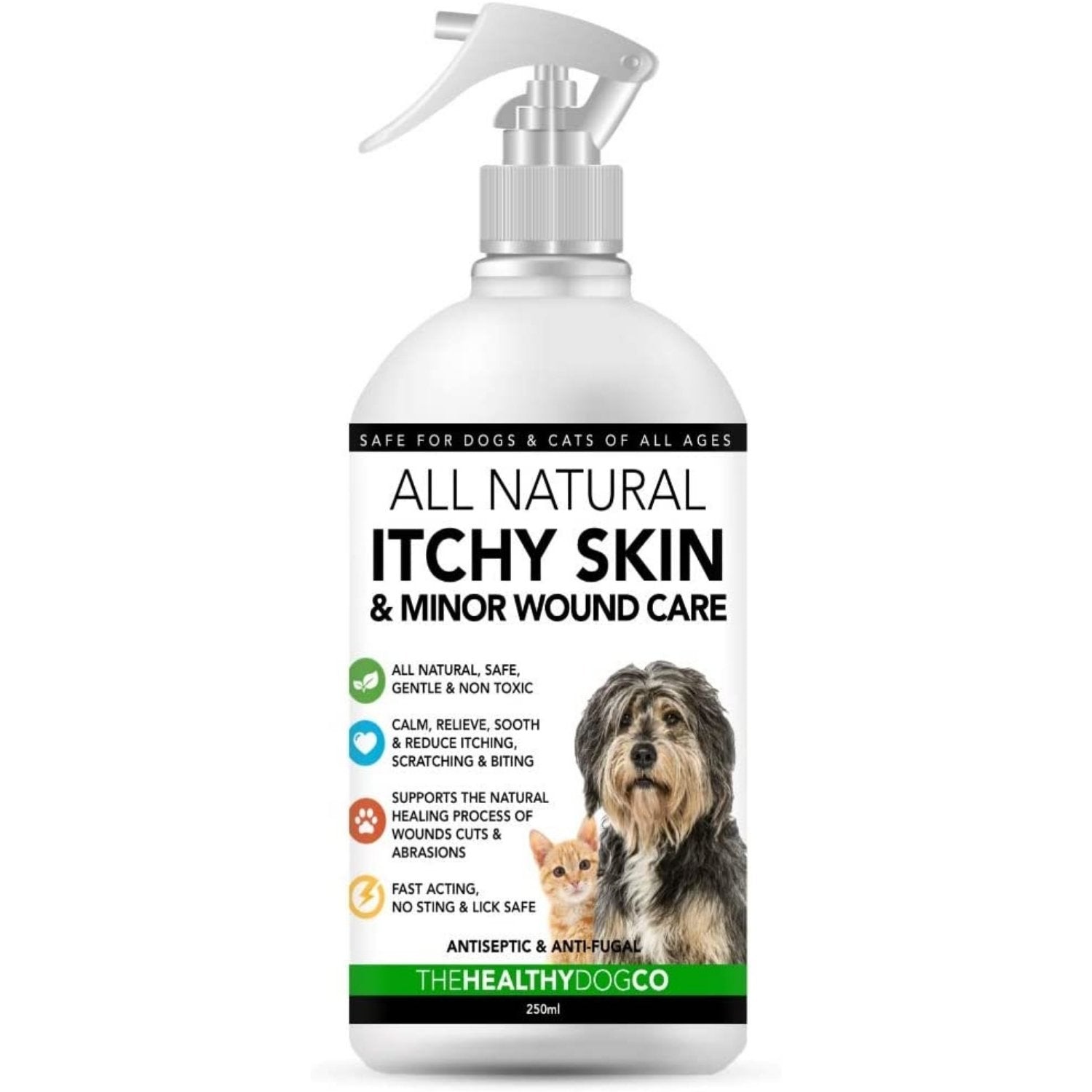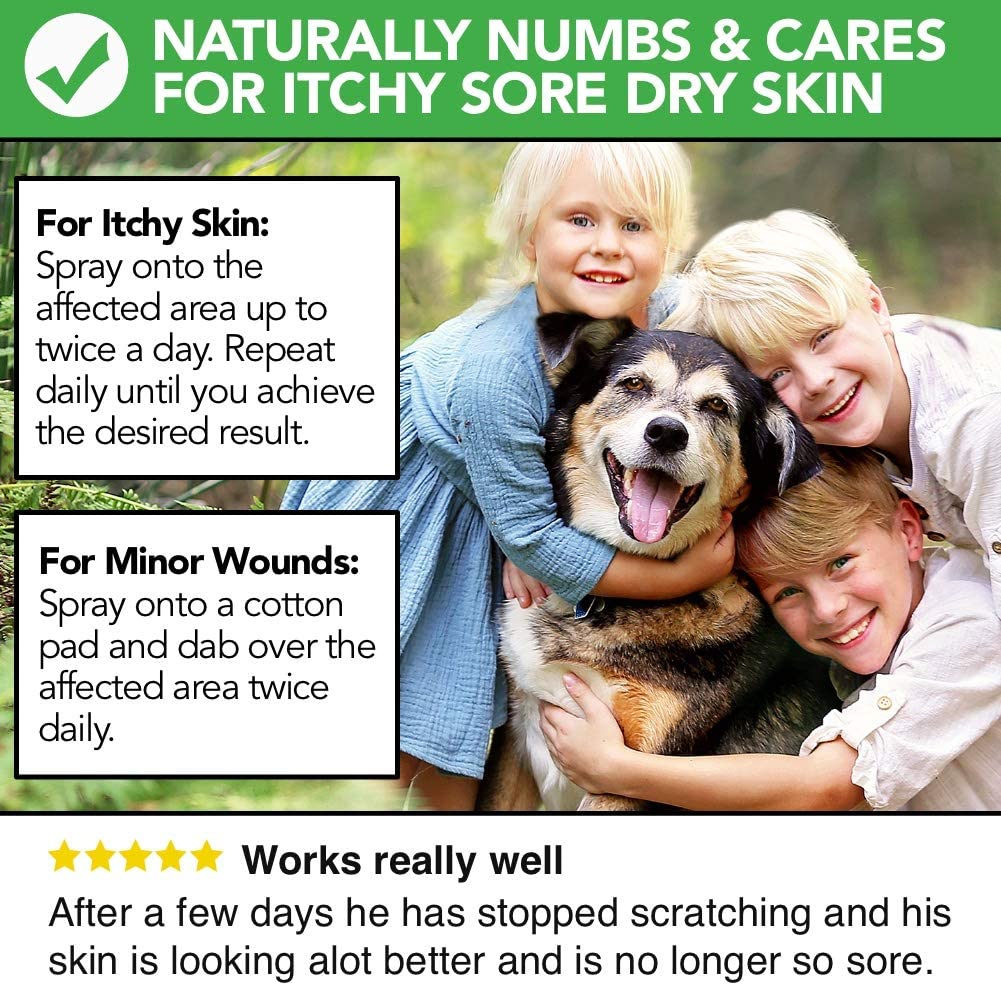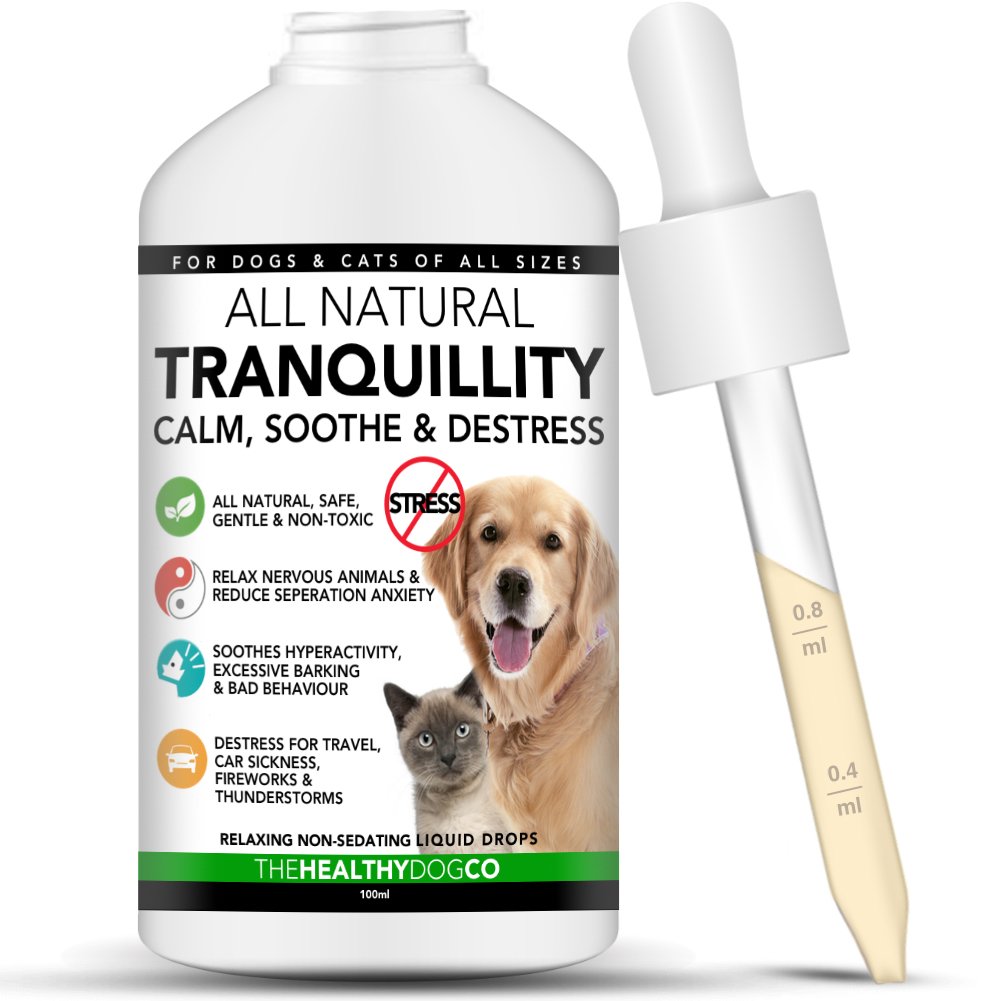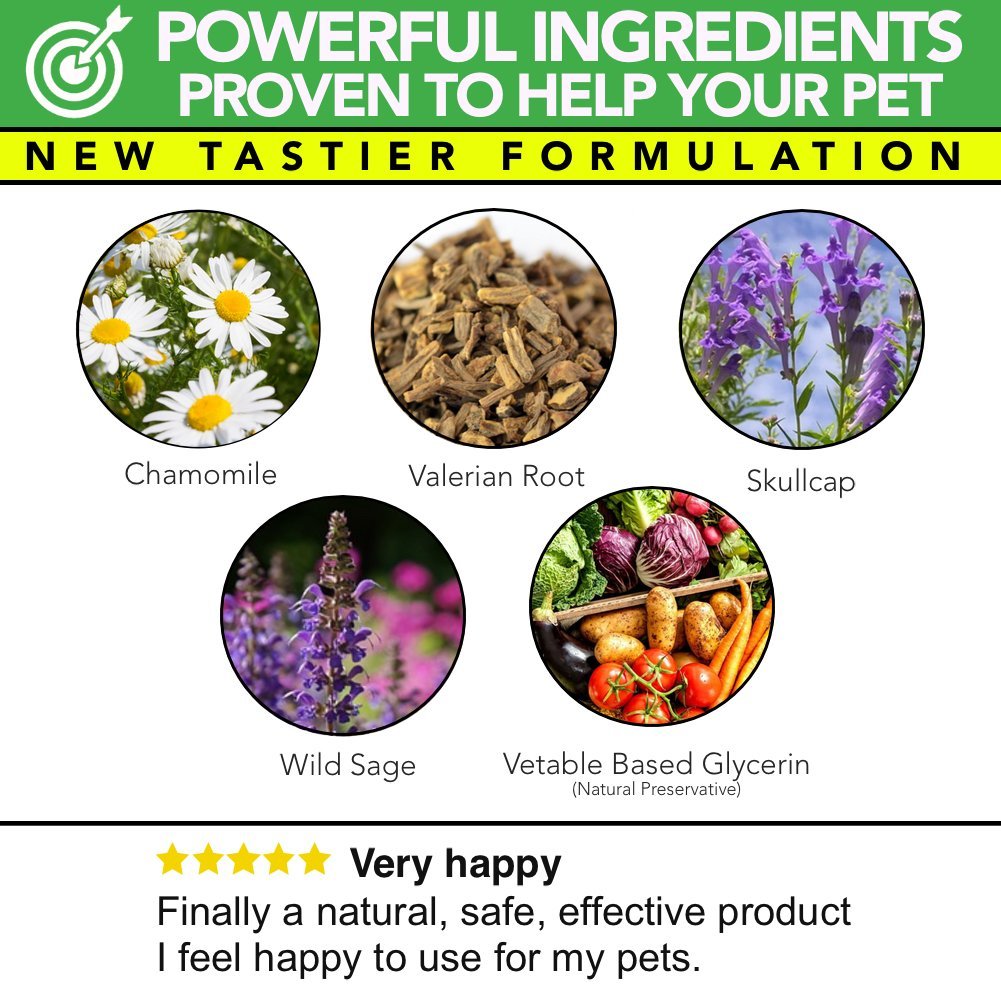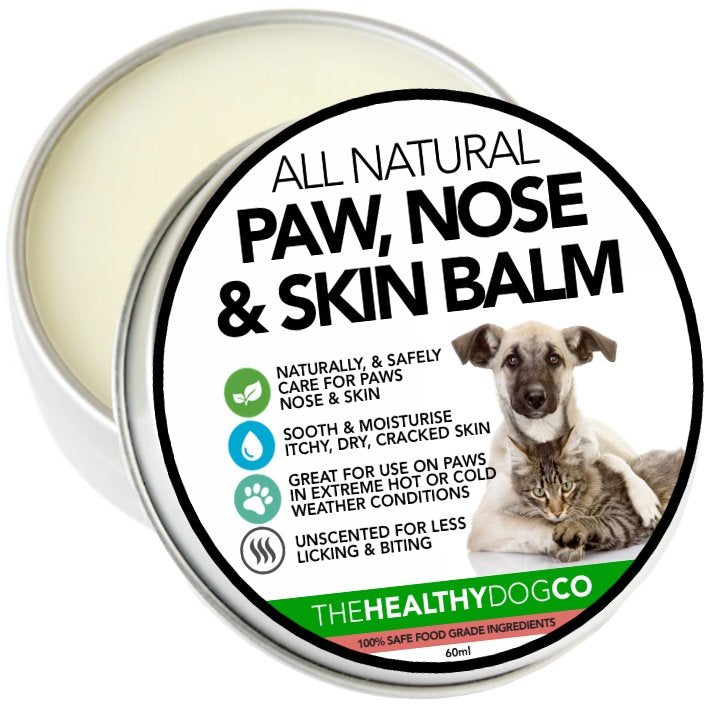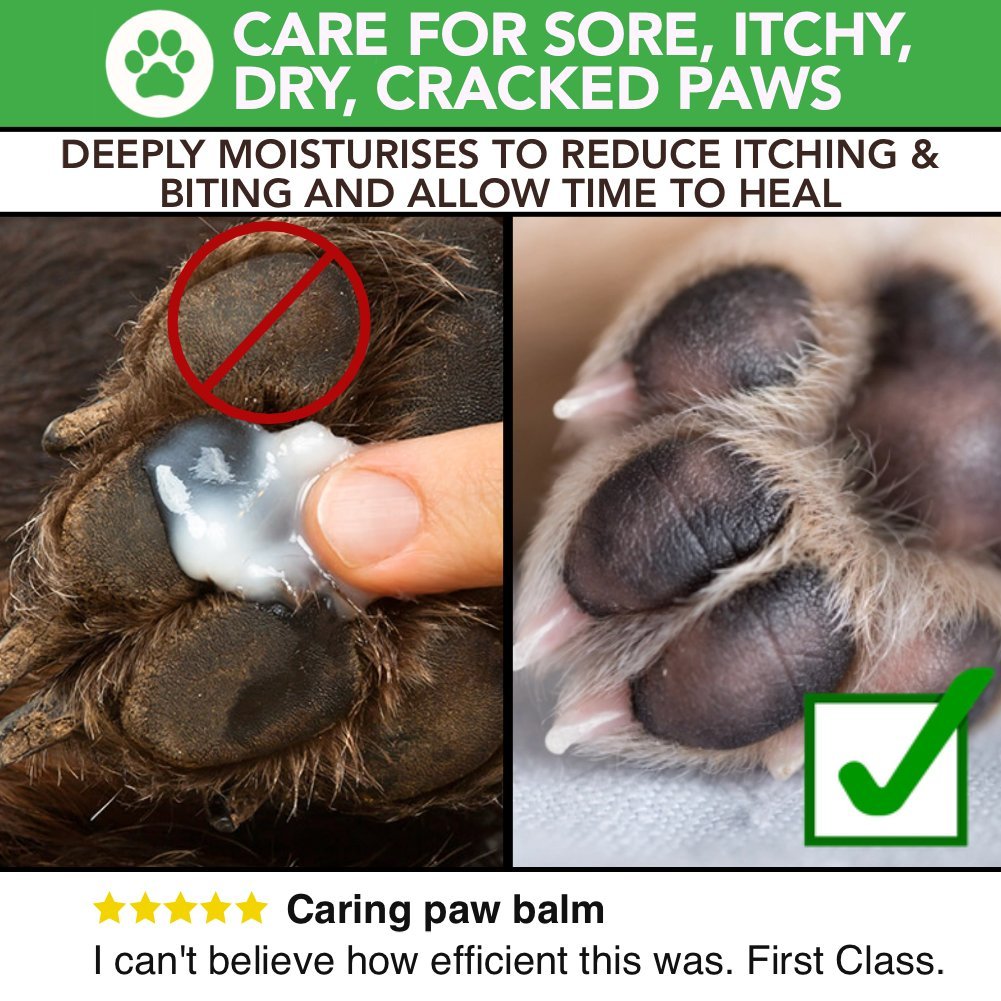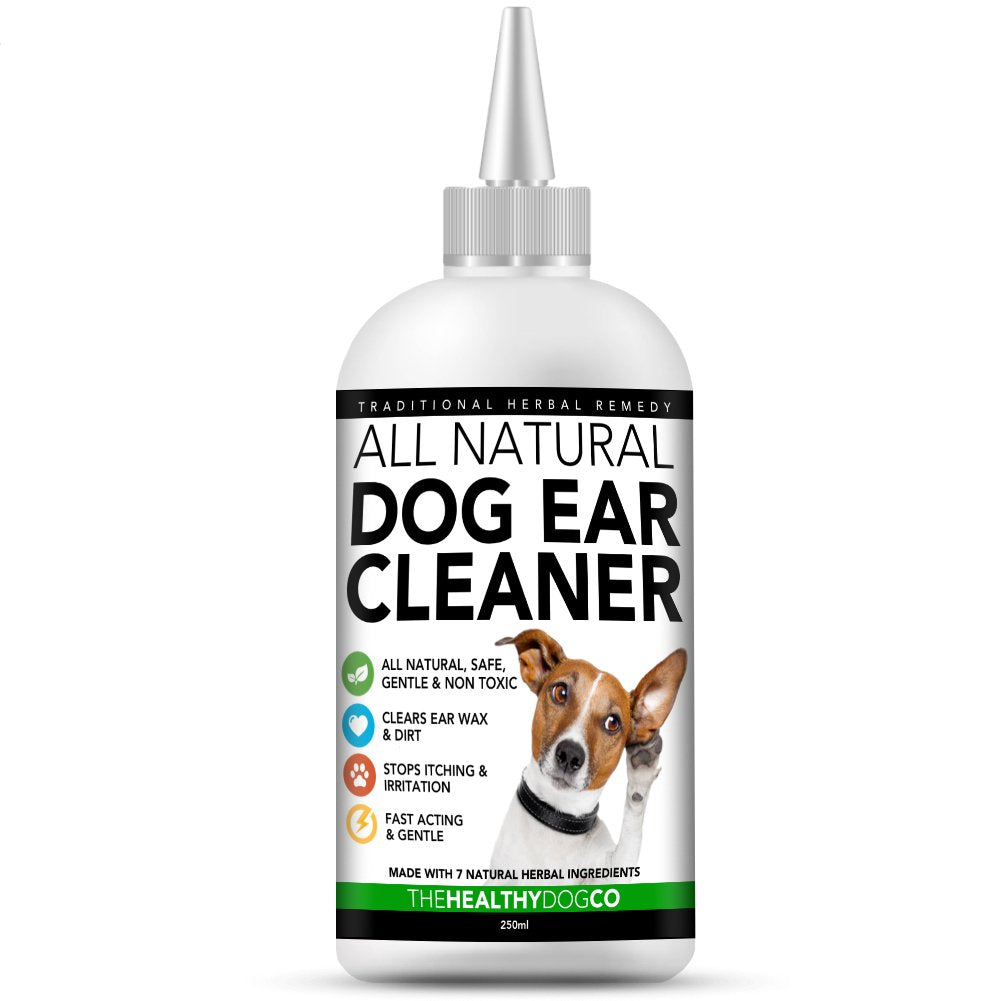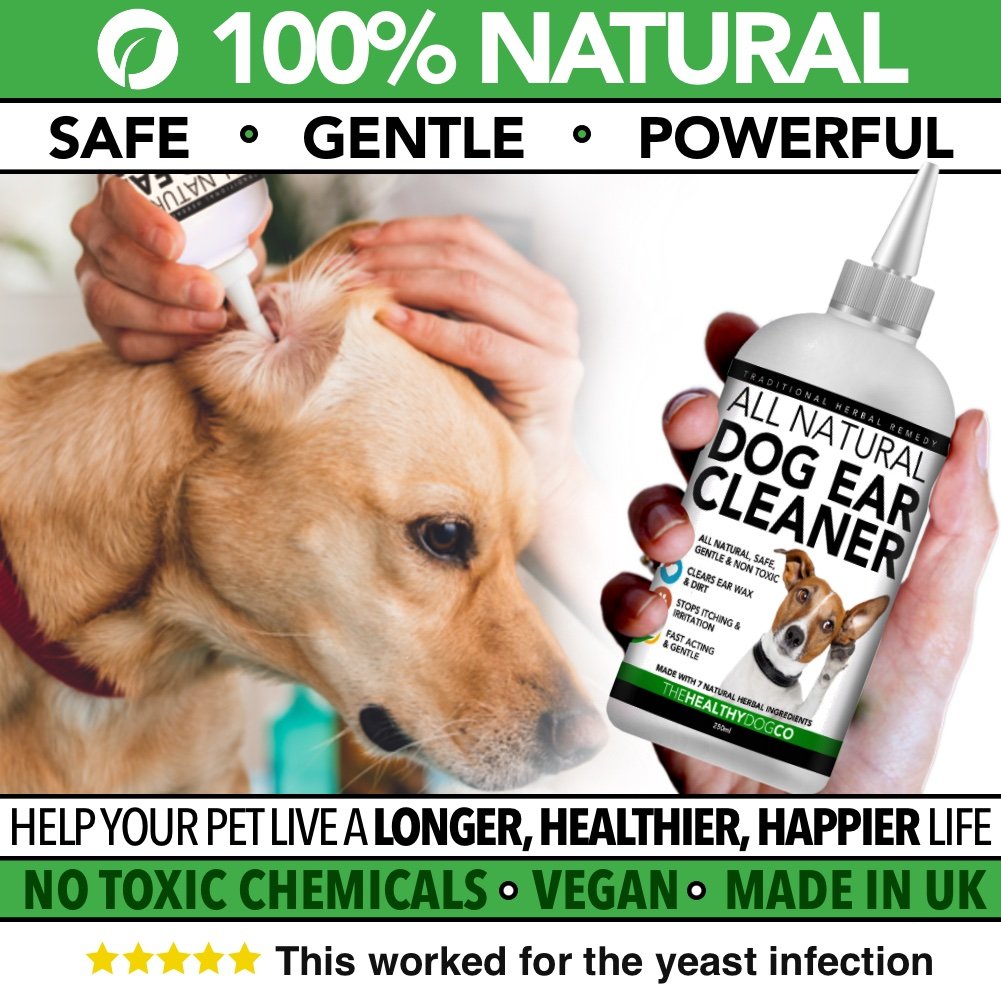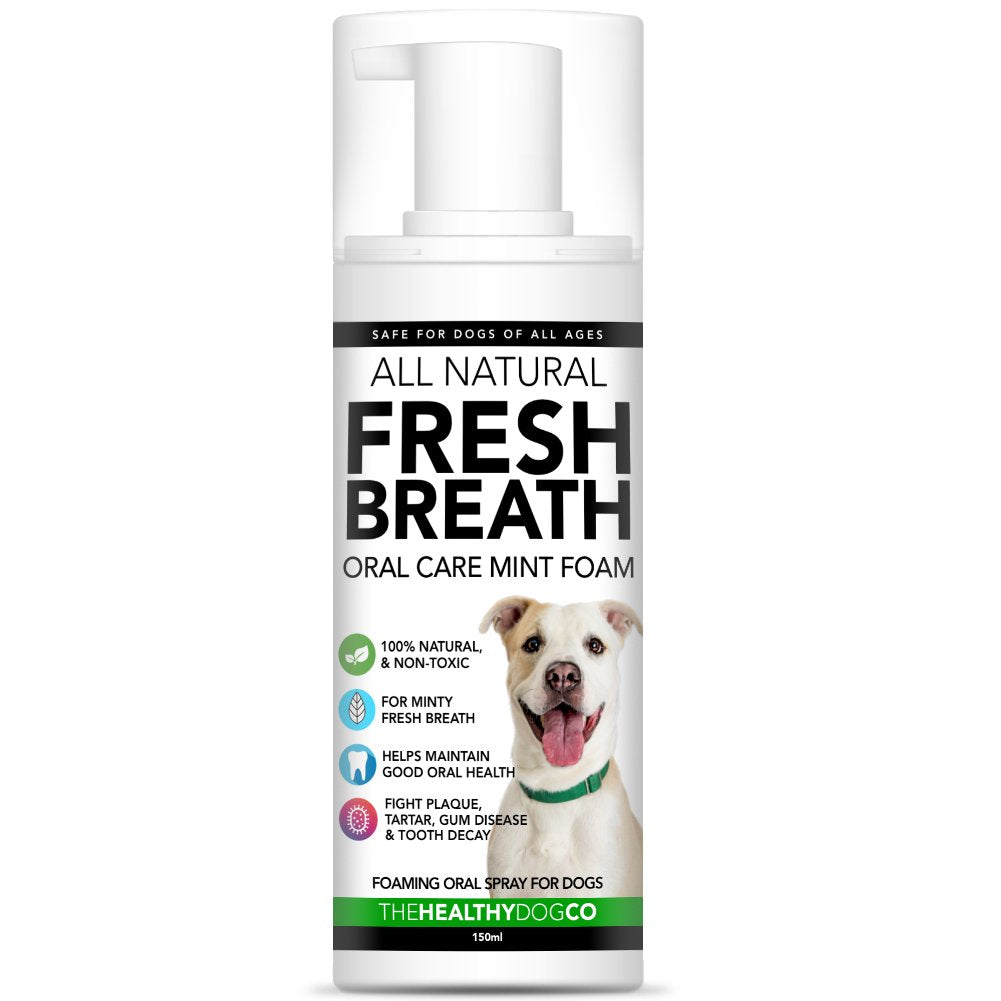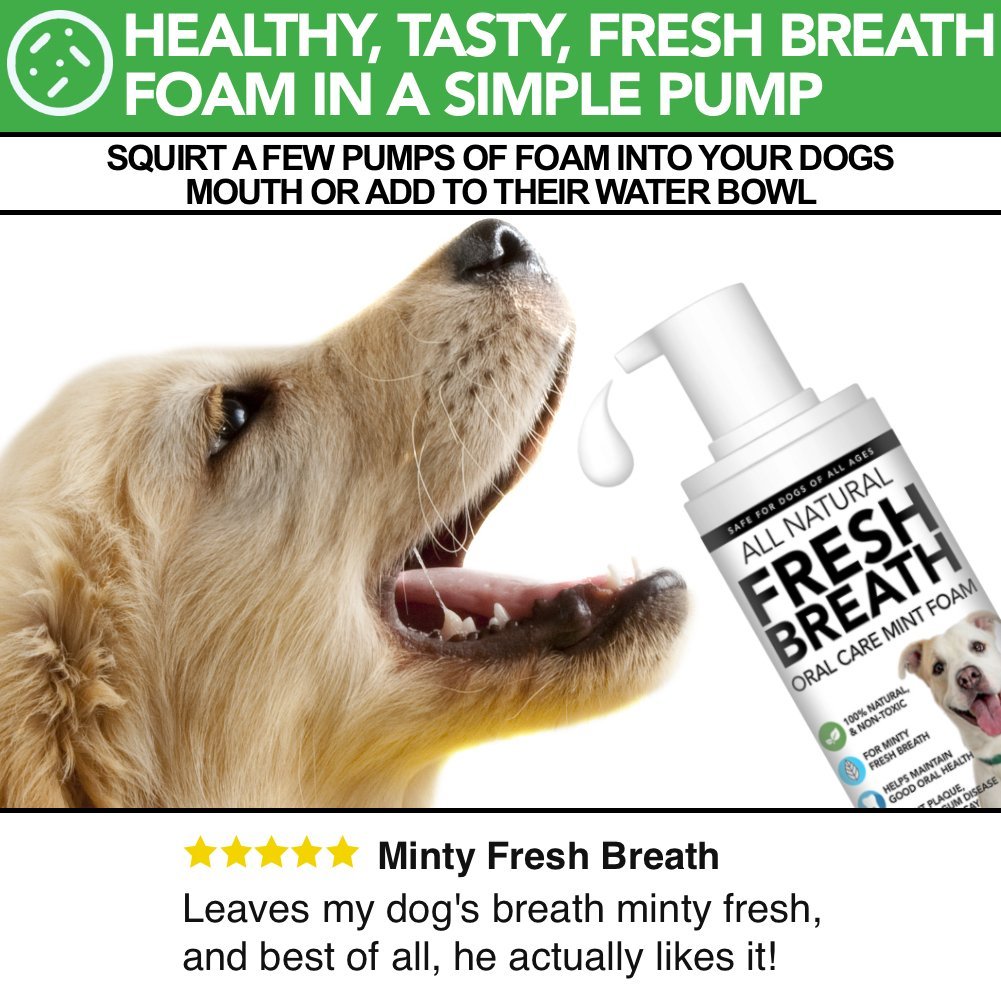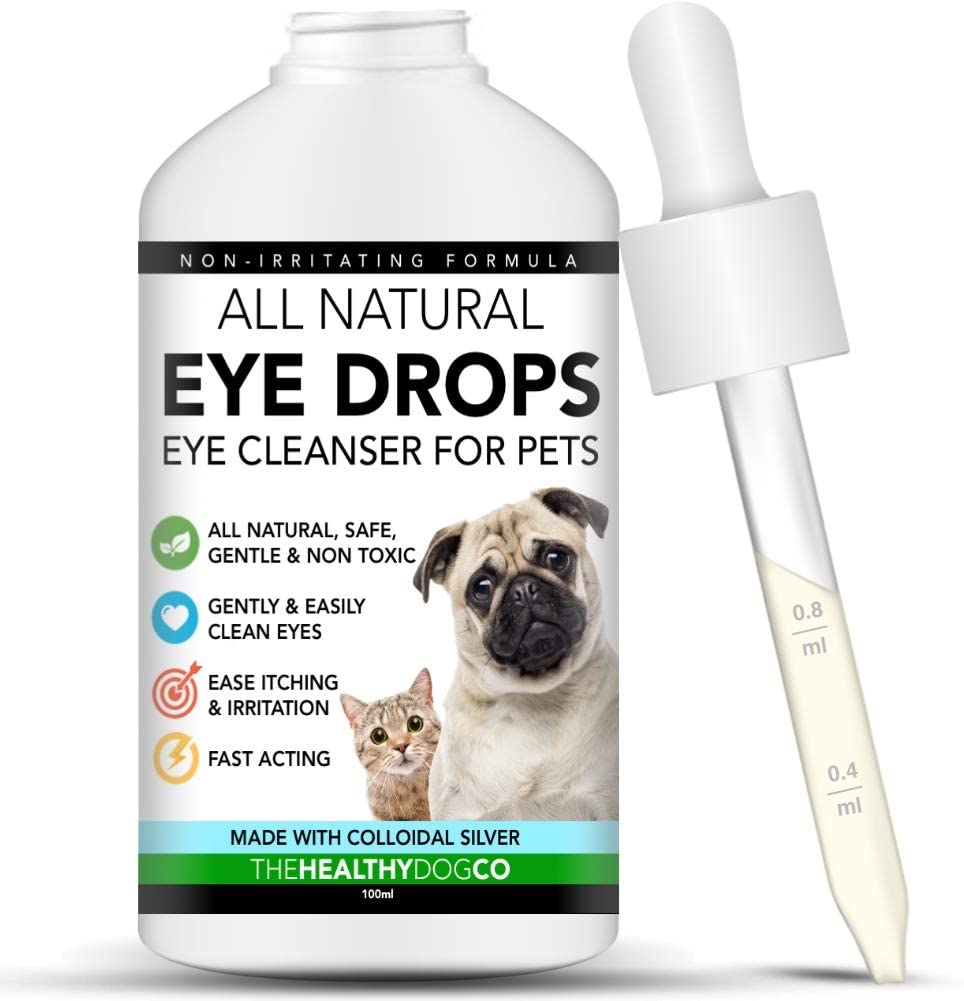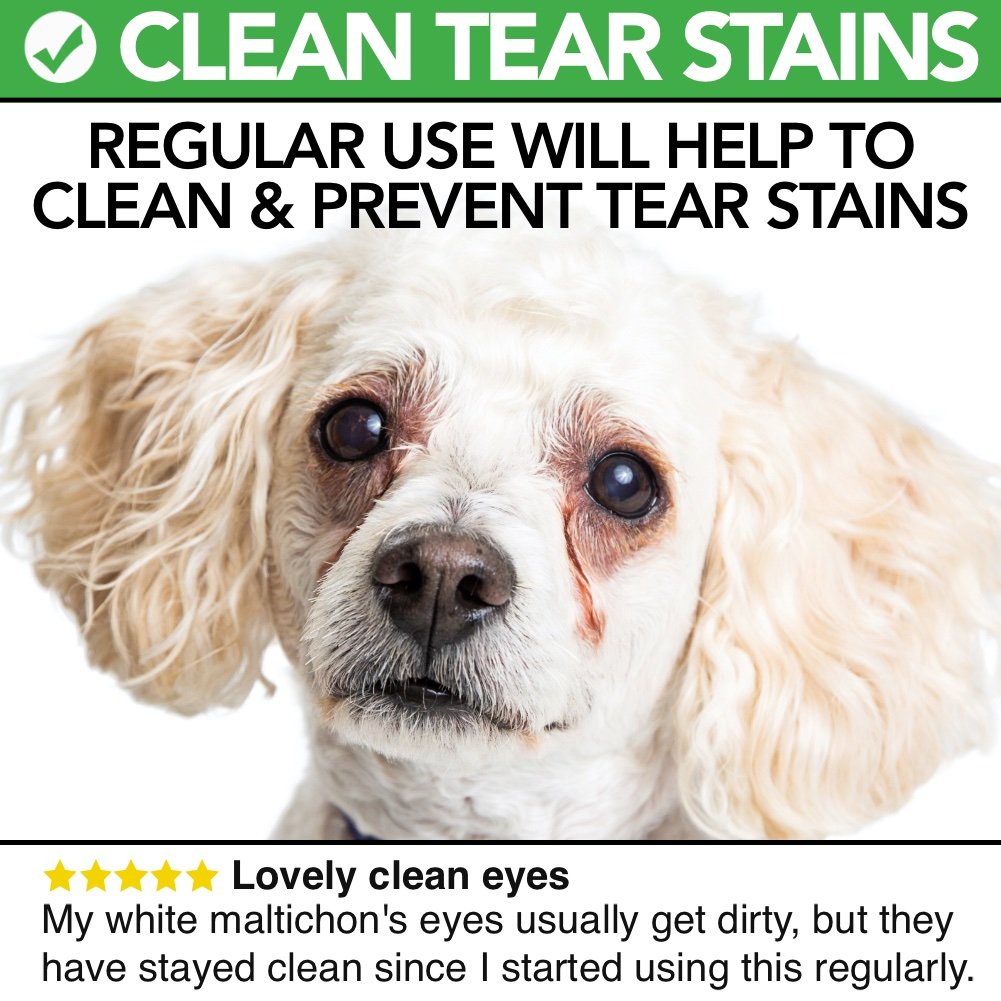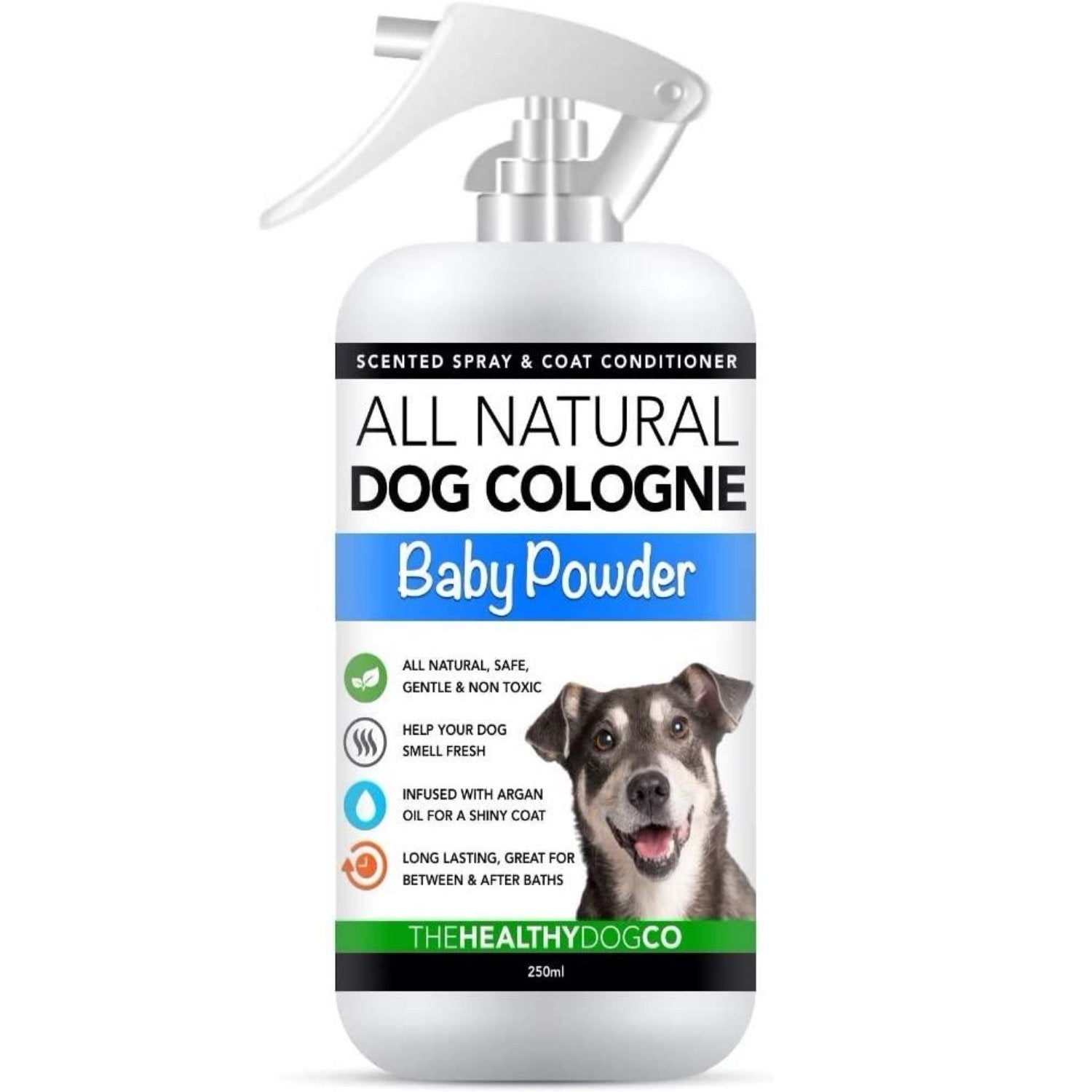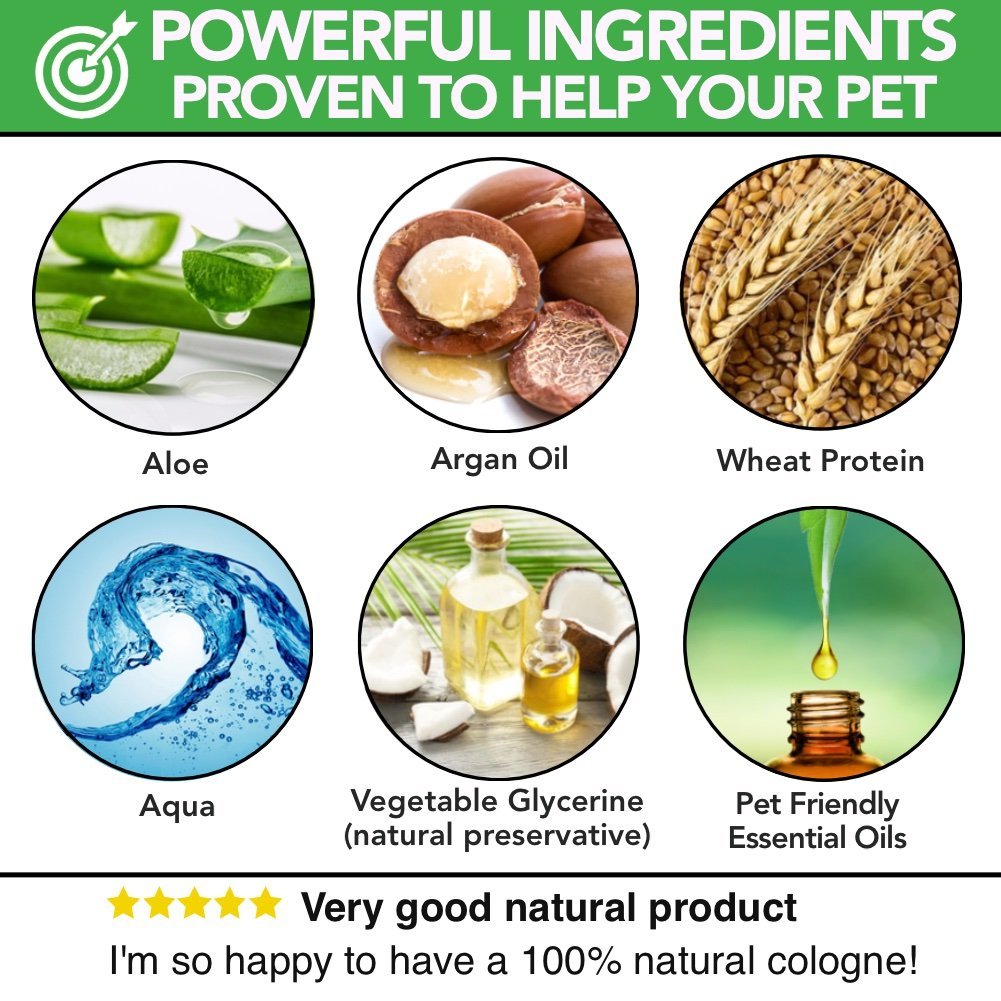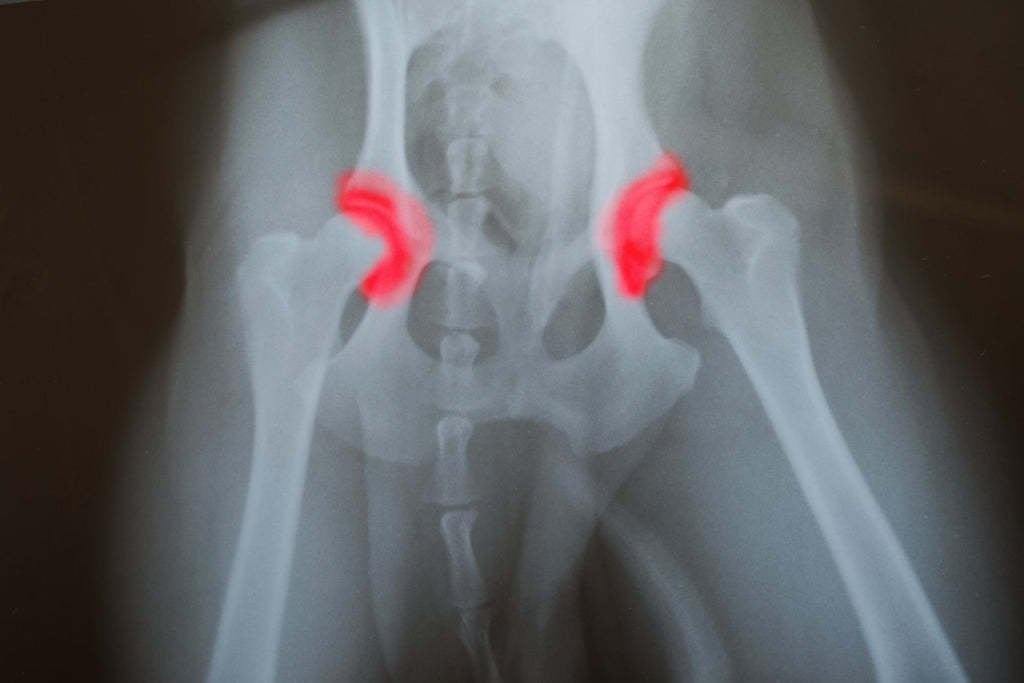
What Can I Give My Dog for Hip Pain?

Did you know that hip problems aren't limited to senior dogs? They can also arise in puppies during their first year of life. That's because some breeds are genetically prone to hip malformation.
Whatever your dog's age when hip pain occurs, you can help them feel better. For some pups, a high-quality joint supplement can quell their discomfort. That's what many of our customers report.
In this post, we present natural, traditional, and alternative approaches to pain relief in dogs. This way, you can have an informed discussion with your dog's vet. Here are answers to questions you likely have about managing dog hip pain.
How can I tell if my dog has sore hips?
Any deviation from normal behaviour can reflect hip and joint pain in dogs. One sign is a declining activity level, such as:
- loss of interest in playing
- can no longer jump into your car
- poor appetite
- tiring sooner
- resting or sleeping more
Additionally, you may see changes in how your dog moves. For instance:
- struggling to lie down, rise, and use stairs
- swaying or limping while walking
- stiffness when changing position
- moving slower
Other observations you may have are:
- joint swelling
- groaning with positional changes
- flinching upon touching your dog's hips
- your dog constantly licks their hip areas
What causes hip pain in dogs?

The two most common reasons for hip pain are hip dysplasia and arthritis.
1. Hip Dysplasia
Dogs inherit this skeletal condition, a hip joint deformity. Two bones from your dog's hip joint -- a ball-shaped bone, set inside a deep cavity or "socket." Lining the joint is cushioning tissue called "cartilage."
When the bones don't grow correctly or fit properly, they grind against each other. Due to the friction, joint cartilage erodes. As a result, the bone tissue gets inflamed, provoking pain. Over time, the hip joint loosens and becomes nonfunctional.
Large breeds tend to develop hip dysplasia. These include the Great Dane, Labrador Retriever, German Shepherd, Rottweiler, Mastiff, and Saint Bernard.
Still, even small breeds can get hip dysplasia, such as the French Bulldog and Pug. One contributing factor is improper diet, accelerating a dog's bone growth. Another trigger is obesity. The extra weight overloads a dog's hip joints. Bones can also degrade when a dog gets too much exercise.
Some canines are little affected by malformed hips until they're seniors. However, symptoms can appear in a five-month-old puppy.
2. Arthritis
As with hip dysplasia, arthritis results from thinning cartilage. This type of joint damage mostly occurs in older dogs. By the time a dog is elderly, its cartilage has worn thin from daily impact. A hip injury can tear joint cartilage.
Wounded cartilage releases painful inflammatory enzymes. The joint tissues may also swell with extra fluid. Bone rubbing can produce spurs, hard growths projecting from the bones. Additionally, bone spurs cause stiffness, hindering joint mobility.
So, if your dog has arthritis, you can see why they avoid movement. As your pup's activity level wanes, their muscles weaken. Consequently, the muscles lose tone, becoming soft or "atrophied."
3. Other Reasons for Canine Hip Pain
Hip degeneration can also stem from certain illnesses and diseases. Examples are:
- joint infection
- anaemia
- cardiac conditions
- hormone disorders
- bone cancer
When should I bring my dog to a vet?
At the first sign of hip discomfort, have a vet examine your dog. By this, you'll learn exactly why your dog hurts. Once the vet discerns the problem, you can discuss treatment options.
Please don't delay professional evaluation! If you do, your dog's condition can quickly worsen. Instead, get a timely diagnosis. This way, you can manage your dog's pain optimally and safely. Plus, you can prevent further joint damage.
The doctor may conduct various tests to arrive at a diagnosis:
- joint manipulation - checking for joint grinding
- blood tests - revealing joint inflammation
- x-rays - showing the extent of hip damage
- gait analysis - observing how your dog walks
- muscle palpation - feeling their muscles for atrophy
You can help the vet form a diagnosis. First, relay any troubling behaviours you've seen in your dog. Next, update the vet on your pup's medical history, such as any accidents or injuries. Also, share what you know about your dog's parentage.
What can I give my dog for hip pain?
For severe discomfort, the doctor may prescribe a painkiller made for pets. There are three types -- nonsteroidal anti-inflammatory drugs (NSAIDs), opioids, and gabapentin.
- NSAIDs - for mild to moderate arthritis and after surgery.
- Opioids - dulls gruelling pain, such as that of cancer, surgical incisions, and advanced arthritis.
- Gabapentin - relieves the burning pain of nerve damage, disabling arthritis, and cancer.
Note that most human-grade pain medicines are toxic to dogs. Such drugs can cause organ failure and even death. However, canine painkillers don't carry this risk. That's because they're formulated specifically for pets and tested for safety.
Still, pet medicines can have unpleasant side effects. Thus, if your vet prescribes a drug for your dog, ask if you can use it short-term. Doing so lowers the potential for adverse reactions. Once your pup starts feeling better, try healthier methods of pain relief, discussed next.
What natural remedy can I give my dog for pain?
We have two joint supplements for dogs targeting joint and muscle pain -- All Natural Joint Genie and All Natural Happy Joint.
Each of these remedies has well-researched herbs, spices, and other natural ingredients. Both joint supplements for dogs address the symptoms of hip dysplasia, arthritis, and postoperative pain. Furthermore, like all our products, these formulas are gentle and non-toxic.
This liquid supplement revives mobility by easing stiffness, inflammation, and pain. It also lubricates joints and promotes muscle health.
As a liquid formula, your dog absorbs it fast, expediting their comfort. Using the included pipette, you can dispense it into your dog's mouth or mix it with their food. If your dog's pain is severe, offer four doses daily. Below are the ingredients in this supplement and how they work.
- Liquorice - calms muscle cramps and joint irritation.
- Sage - lessens inflammation and soothes sore joints.
- Ginger Root - revs circulation and curbs inflammation, relieving muscle and joint pain.
- Turmeric - reduces stiffness, swelling, and inflammation, increasing joint flexibility.
- Devil's Claw - eases aching and swelling, facilitating movement.
- Cayenne - comforts tender tissues while blocking nerve pain.
- Rose Hips - decrease pain and stiffness, hindering joint damage.
Customers say Joint Genie has markedly lessened their dog's pain, limping, and swelling, restoring their mobility. One older dog, Suzie, resumed chasing her ball and using stairs.
This powdered joint care for dogs is enhanced with green-lipped mussel, a type of shellfish. A 2007 canine study assessed the benefits of a green-lipped mussel formula on arthritic dogs. After eight weeks on the supplement, the dogs had much less pain and more comfortable movement. These groundbreaking findings are recorded in the journal Evidence-Based Complementary and Alternative Medicine. The perfect joint supplements for dogs.
Green-lipped mussels are rich in omega-3 fatty acids, having anti-inflammatory properties. The zinc and magnesium in these mussels aid joint function. Furthermore, this shellfish has glucosamine and chondroitin. Both these nutrients are natural components of cartilage and joint fluid.
Glucosamine and chondroitin are study-proven to rebuild cartilage and lubricate joints. Plus, they speed recovery after joint injuries.
Pet joint formulas often contain glucosamine and chondroitin. However, dogs assimilate these nutrients better from green-lipped mussels.
Like Joint Genie, our joint care for dogs eases stiffness, soreness, and inflammation. While dogs absorb Joint Genie faster, some prefer the taste of All Natural Happy Joint. Here's what it contains.
- Celery - subdues pain and strengthens bones.
- Ginger - increases circulation, calms joint irritation, alleviates pain, and improves movement.
- Flaxseed - its fatty acids tame joint inflammation and pain.
- Cayenne - neutralises inflammatory chemicals.
- Turmeric - relieves aching, swelling, and stiffness in joints and muscles.
- Green-Lipped Mussels Extract - reduces joint pain and stiffness, eases muscle soreness, relieves inflammation, and lubricates joints.
Many customers verify that All Natural Happy Joint provides hip pain relief for dogs. States one pet owner, after a few weeks on this formula, his senior Labrador Retriever started playing again.
Other Natural Approaches to Pain Relief
Weight-Reducing Diet
If your dog is overweight, try feeding them less caloric food. By helping your cutie trim pounds, you'll lighten their hip workload, reducing their pain. Talk with your vet about commercial dog foods formulated for weight loss. Many high-quality brands exist, some of which your vet may stock.
Household Adaptations
Orthopaedic Dog Bed
Ideal dog bed fillers are memory foam, support foam, and medical-grade orthopaedic foam. These resilient, cushiony materials ease hip pain in dogs. They also help elderly dogs rise after lying down.
Another option is a warming bed. Gentle heat expedites circulation, reducing stiffness. To protect your dog from burns, purchase a bed with a low heat setting. Also desirable is automatic shut-off. For safety reasons, when the heat feature is on, make sure you're home.
Be sure to situate your dog's bed away from cold drafts.
Carpeting
Do the floors and stairs in your home have hard surfaces? If so, you might install carpeting.
Dog Stairs and Ramp
If your dog likes to sleep on your couch, obtain "dog stairs." Another option is a "dog ramp." A ramp can help your dog access both furniture and your car. This article gives buying tips and recommended models of dog stairs and ramps.
Exercise
Keeping your cutie active is vital for their health. If your dog is sedentary, their muscles will get too weak, leaving their hips unsupported. Eventually, your dog could lose the ability to walk.
Certain types of exercise can strengthen your dog's hips without overworking them. Examples are walking and swimming. Moderate activity can help an overweight dog slim down, reducing hip strain. Still, don't engage your dog in jumping and roughhousing.
For an arthritic dog, a vet may suggest exercise as tolerated. Hip dysplasia responds best to gentle exercise, avoiding hard surfaces.
Ask your vet for advice on how much exercise is best for your particular dog. Or, for expert guidance, consult with a Certified Canine Rehabilitation Practitioner (CCRP). This professional can tailor an exercise program to your dog's condition.
Your vet can probably refer you to a local CCRP. If not, try this search tool by the Canine Rehabilitation Institute.
Massage Therapy
This modality offers pain relief in several ways. Stroking massage enhances your dog's circulation. Gentle stretches relieve muscle tension, improving your pup's flexibility. Furthermore, tissue mobilisation activates "endorphins," natural painkilling hormones.
However, avoid massage if your dog has a skin or joint infection, dislocated or broken hip, or cancer. In these cases, tissue mobilisation will harm your dog.
Do you think your pup would enjoy massage therapy? If so, consult an experienced professional. If you're not skilled in massage techniques, your dog can get injured.
One veterinary practises we recommend highly is Stafford Veterinary Physiotherapy. The clinic is based in Staffordshire, and the doctor offers home visits. After observing the vet's massage method, you can duplicate it at home. Or, your dog can continue receiving her expert care.
If you don't live near Staffordshire, here's a search tool by which to find a certified canine massage therapist.
Acupuncture and Acupressure
This pain relief option is a type of Chinese medicine. Canine acupuncture entails using thin needles to stimulate energy centres on your dog's body. As a result, blood flow increases to your dog's hip tissues, nourishing them. Moreover, acupuncture relaxes canine muscles, rouses endorphins, and increases joint flexibility.
Acupressure achieves similar results. It involves applying gentle pressure to your dog's energy centres without inserting needles. Acupressure suits dogs who are sensitive to needles. It's also ideal for treating areas that are tough to reach with needles.
For dogs with arthritis and hip dysplasia, acupuncture and acupressure have long-term benefits. Your vet can advise whether your dog is a good candidate. If so, ask the doctor for a referral to a local veterinary acupuncturist. Or, use this search tool by the Association of British Veterinary Acupuncturists (ABVA).
Laser Therapy
A laser targets damaged tissue with light energy from a handheld device. For hip and joint pain in dogs, the instrument used is a "cold laser." This technology employs a particular wavelength and intensity that doesn't harm a dog's tissues. Laser therapy is effective for canine arthritis, surgical incisions, tendon injuries, and ligament sprains.
Once your dog's tissues absorb the light, their nerves produce fewer pain signals. Meanwhile, the laser triggers protein synthesis. By this, injured cells regenerate and inflammation lessens. Furthermore, muscles relax and joint flexibility improves. Plus, laser therapy activates endorphins and enhances circulation.
Ask your vet if laser therapy can help your dog. If so, they can likely refer you to a laser therapy specialist near you.
Surgery for Hip Dysplasia
For some dogs with hip dysplasia, surgery may be the treatment of choice. Vets perform three types of corrective surgery.
Double or Triple Pelvic Osteotomy (DPO/TPO)
This operation suit pups younger than 10 months old. It entails shaping a dog's pelvic bone and rotating the ball and socket, improving their fit.
Femoral Head Ostectomy (FHO)
This procedure is done on both mature and young dogs. With FHO, the surgeon removes the ball of the hip joint. While the hip doesn't move normally, a dog has less pain.
Total Hip Replacement (THR)
THR banishes most of a dog's discomfort and restores their hip movement. The vet replaces the hip joint with plastic and metal components.
Major Pain Relief
Now you're well-acquainted with effective methods of hip pain relief for dogs. Conventional types are pet pain medicines, laser therapy, and surgery. Vet-prescribed painkillers do have side effects. Still, they're less likely when used short-term.
Alternative medicine pain treatments are massage therapy, acupuncture, and acupressure.
Is your pup overweight? If so, speak with your vet about starting your dog on a weight-loss diet. The doctor can prescribe dog food that will boost your cutie's metabolism, trimming excess pounds. Your dog's hips will appreciate having to bear less weight.
Consider adapting your home to your dog's disability. You can provide an orthopaedic dog bed, with or without heat. Compared with hard surfaces, carpeted floors and steps are kinder to canine hips. Dog stairs help your pup access your couch. A dog ramp aids getting into your car.
Regarding exercise, ask your vet for the best types, frequency, and duration for your cutie.
With your vet's approval, try our two joint supplements for dogs -- All Natural Joint Genie and All Natural Happy Joint. Perhaps, like Suzie, the senior dog, your pup will take up playing again!
About The Healthy Dog Co
The Healthy Dog Co’s mission is to create products that dog and cat owners can trust with the health of their pets by only producing products with healthy, safe, all-natural ingredients.
At The Healthy Dog Co, it’s all about giving your pet a healthy and happy life with All Natural Health, Happiness and Care Products.
Because Your Pet Deserves Better!
Shop our range of All Natural Healthcare Products for your Dog or Cat today!



